Sushi is arguably the most popular type of Japanese cuisine. But to the uninitiated, it can be difficult to understand. If you’re looking to up your sushi and sashimi game, you’re in the right place.
We’ve broken down this complex subject into easy-to-digest bites. This post starts big-picture and narrows in focus to more obscure dishes, ingredients, and practices.

What is Sushi?
Sushi is a combination of vinegared rice and other ingredients. Fish and shellfish, sometimes raw, are common and traditional components of sushi. Vegetables, eggs, and even meat are used to make sushi, as well.
The one constant is vinegared rice.
Sushi is a broad category. This post will cover the many types of sushi that exist.
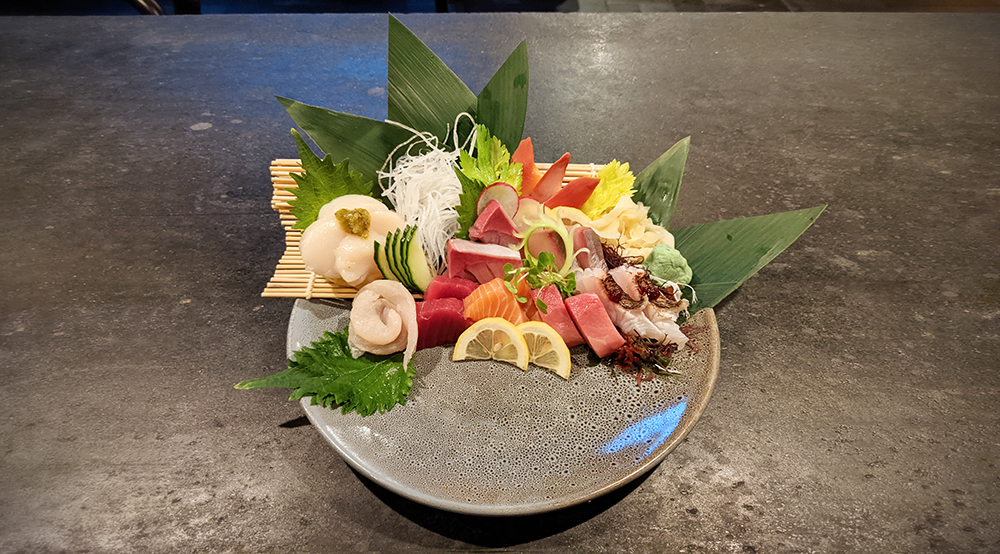
What is Sashimi?
Sashimi is thin-sliced fish or shellfish, which is typically served raw. Meat is sometimes used, as well. Sashimi is often lumped together with sushi, but since it does not use vinegared rice, it is not sushi.
The practice of eating raw fish and meat was around long before sushi was developed.
Regardless of the fact that sashimi is not a type of sushi, the commonalities the two cuisines share make sashimi worth including in this post.
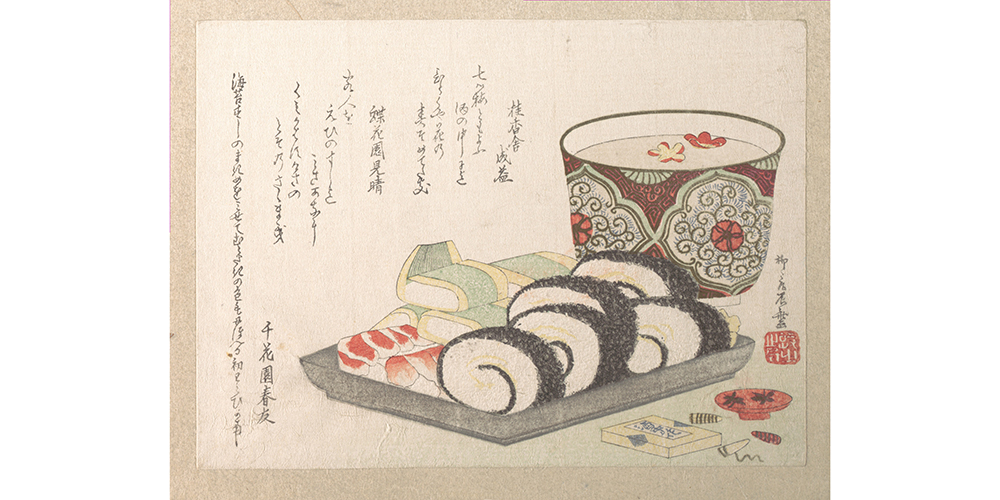
A Brief Overview of Sushi History
Sushi has evolved significantly over the centuries into what we know today.
Its roots are from southeast Asia, where fish was fermented in order to preserve it and extend its shelf life.
In Japan, narezushi is often considered the ancestral form of sushi. Freshwater fish were aged in salt and rice, which preserved the fish and removed moisture. The rice would be discarded after aging was complete.
Later, fish was fermented for a significantly shorter amount of time. Pickled rice was eaten with the fish. This fresher-tasting style of sushi is called namanare.
Hayazushi (fast sushi) was the next major development and was born during the Edo period. Rice was now mixed with vinegar, and the fish wasn’t necessarily aged. It had a lighter flavor and was significantly easier to produce.
This style evolved in Edo (modern Tokyo), where fresh seafood was widely available. Eventually, an even simpler variation was invented called nigirizushi. This simple “hand-formed” sushi is still extremely popular today.
Sushi Rice: Shari
Sushi rice is known as shari (しゃり) or sushi meshi (すしめし). It is made with cooked short-grain rice, rice vinegar, sugar, and salt. This simple ingredient is the basis for all modern sushi.
Sushi rice has a firmer and chewier texture than normal boiled rice. When made properly it will have a glossy appearance.
Sharizu
Sharizu is the sushi rice vinegar. It consists of rice vinegar, sugar, and salt. Every restaurant will have its own recipe for this dressing.
The ingredients are placed on low to medium heat for a short duration to combine.
How to Make Sushi Rice
Despite its simplicity, making quality sushi rice is a craft that requires skill. This is usually the first task an aspiring sushi chef is given to master.
If you want to make your own shari, we recommend watching master sushi chef Taichi Kitamura’s how-to video below.
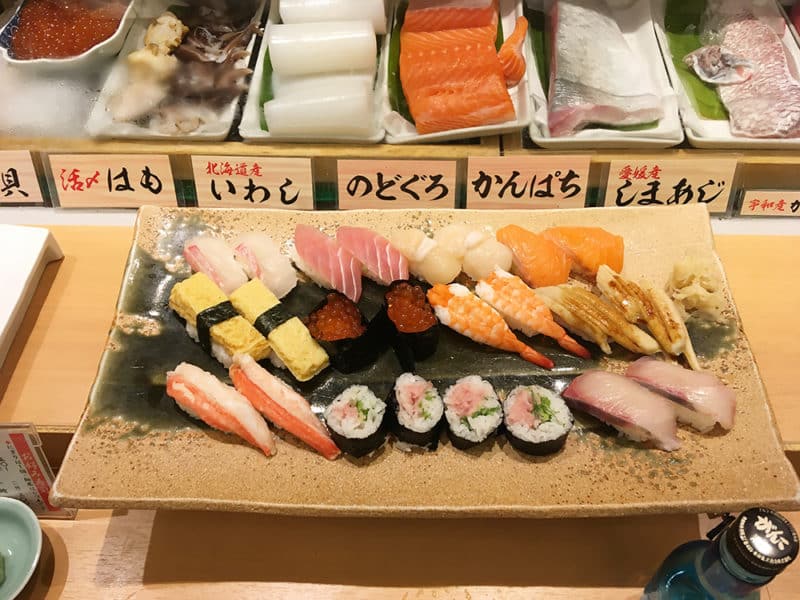
Common Types of Sushi
When most Westerners think of sushi, makizushi comes to mind. However, sushi rolls are by no means the only type of sushi, nor are they the most classic.
In this section, we discuss some of the most important types of sushi, from its ancestral roots to the most modern interpretations.
Nigiri Sushi
Nigiri is a classic form of sushi that is both elegant and delicious. It consists of a hand-formed finger of sushi rice that’s topped with a slice of seafood. And there’s typically a dab of wasabi between the rice and topping.
Nigiri sushi looks simple, but it is extremely difficult to prepare. Mastery takes years of practice and a subtle dexterity. When executed properly, it is said that all of the rice grains will face the same direction.
The proper way to eat nigiri is with your hands. If you choose to use soy sauce, turn the piece upside down to dip it. Dipping the rice can cause it to absorb too much and may cause the rice to fall apart. Fish that already have been dressed with sauce like unagi do not need soy sauce.
Nigiri often come in orders of two pieces. They should be eaten in one or two bites.
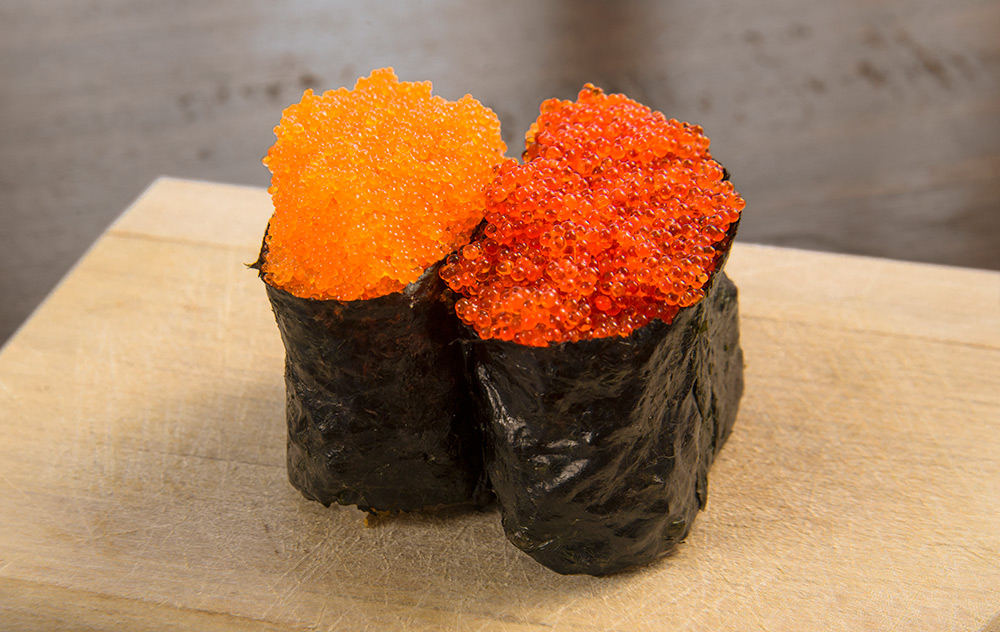
Gunkanmaki
Gunkan (軍艦) means warship and is a sub-type of nigiri sushi. A strip of nori is wrapped around a clump of sushi rice with space at the top. This space is filled with soft or loose ingredients like uni, fish roe, or minced fish.
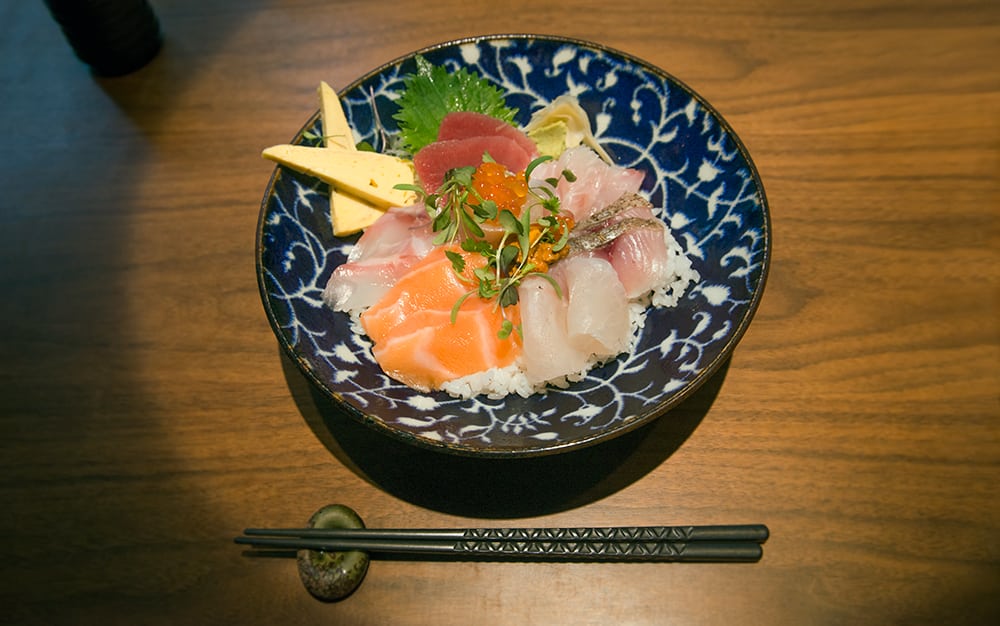
Chirashi Sushi
Chirashi (ちらし) means scattered and is a type of dish with seafood and vegetables scattered inside or over the top of sushi rice. There are a number of regional variations of chirashi, and it’s a popular type of sushi to make at home, as well.
Oshizushi – Pressed Sushi
Oshi (押し) means pressed, as this style of sushi is pressed using a mold. Oshizushi is an Osaka specialty, but you can find it anywhere in Japan and at many restaurants abroad.
The three-piece push frame used to make oshizushi is called an oshiwaku. Traditionally, this is made of Japanese cypress.
Sushi rice and other ingredients are placed into the box to form a block of sushi. Once removed, the block is sliced into smaller cubes.
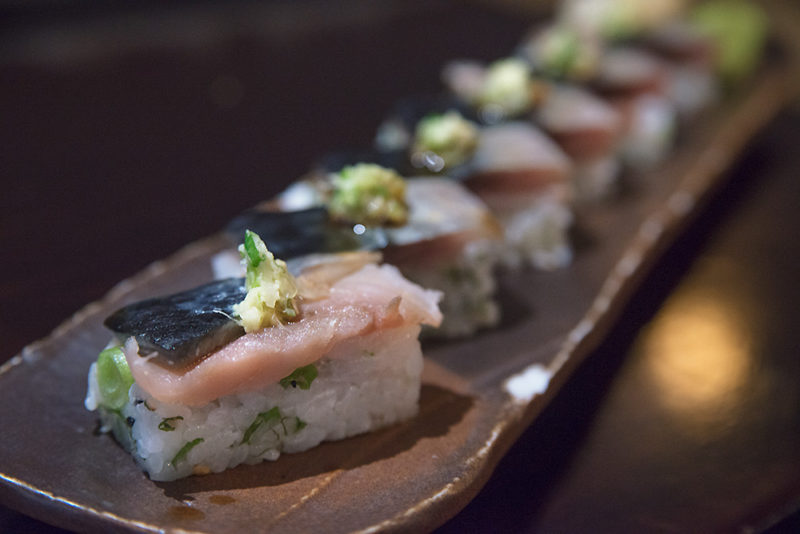
Batterazushi
Battera sushi is a sub-style of pressed sushi. The name comes from the Portuguese word for ship: bateira. The pressed sushi was thought to look similar to a decorative Portuguese ship.
In the past, gizzard shad was the fish of choice. Today, saba is more popular for battera sushi.
Narezushi
Narezushi (熟れ寿司) is matured sushi that is fermented in salt and rice. This is thought to be the ancestral form of sushi. The process of lacto fermentation preserved the fish. The rice used during the aging process is discarded.
The most famous type of narezushi is called funazushi, which is a specialty of Shiga. It uses a large goldfish (nigorobuna) from Lake Biwa.
Makizushi – Sushi Rolls
Maki are arguably the most familiar type of sushi to diners in the West. They have helped popularize Japanese food and have taken on a life of their own outside of Japan.
What is Maki Sushi?
Maki (巻き) is rolled sushi made of shari, nori seaweed, and some sort of filling. There are many variations of makizushi including the hosomaki, futomaki, the hand roll, and the Americanized uramaki.
Maki sushi has become so popular in the West that many diners believe it is the principal type of sushi, which is not true, of course.
Types of Rolls – Maki
Below is a list of some of the most common general categories of sushi rolls.
Hosomaki – Thin Sushi Roll
The hosomaki (細巻き) is a thin roll consisting of an ingredient or two wrapped in rice and nori. The seaweed will be on the outside.
Norimaki is another name for hosomaki. It’s often used in and around Tokyo.
Classic examples of hosomaki include the tekka (tuna) and kappa (cucumber) rolls. The negihama roll is another popular type of hosomaki.
Chumaki
A chumaki (中巻き) is a slightly larger roll than the hosomaki. It uses two or more ingredients but otherwise looks similar to its smaller cousin.
Futomaki – Thick Sushi Roll
As the name implies, the futomaki (太巻き) is a thick sushi roll. It features several ingredients, sushi rice, and toasted nori wrapped around the outside.
Futomaki can use any number of ingredients. Some of the most common are tamago, cucumber, kanpyo, shiso, and gari. In the US, soft shell crab “spider” rolls are a popular type of futomaki.
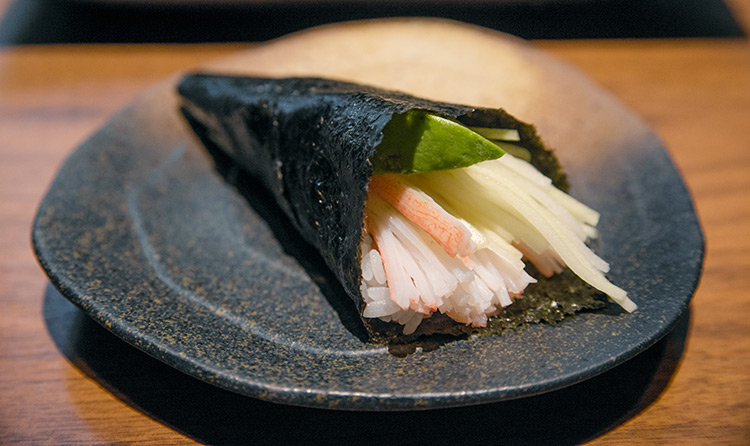
Temaki – Hand Roll Sushi
The temaki (手巻き) is a hand roll with a variety of ingredients and sushi rice that are wrapped with nori seaweed. This cone-shaped style of sushi is fun to eat and infinitely customizable.
Uramaki – Inside Out Roll
The uramaki (裏巻き) is made with the nori seaweed hidden inside and the sushi rice on the outside. This Western-style roll is said to have been invented by chef Hidekazu Tojo in Vancouver, B.C. His crab and avocado-based uramaki was designed to please the American palate and went on to be called the California roll.
Uramaki can hold more ingredients than many other types of rolls. Today, they’re often topped with additional ingredients. At some restaurants, they’ve grown to gigantic sizes and are often covered in sauces.
Besides the legendary California roll, other popular uramaki include the Philly roll, rainbow roll, dragon roll, and spicy tuna.
While many types of rolls can be eaten with your hands, uramaki is best eaten with chopsticks.
Popular Maki Sushi
Below are some of the classic and most popular types of sushi rolls. We also include modern and popular Western-style rolls.
Tekka Maki
The tekka (铁火) roll is a classic hosomaki made with strips of tuna. These cuts are often uneven and would not present well as sashimi or nigiri, despite their similar quality. The tuna in a tekka roll should not be minced.
Tekka means red hot iron (color), but this type of sushi originated at gambling dens called tekkaba. It was a simple snack that became popular elsewhere.
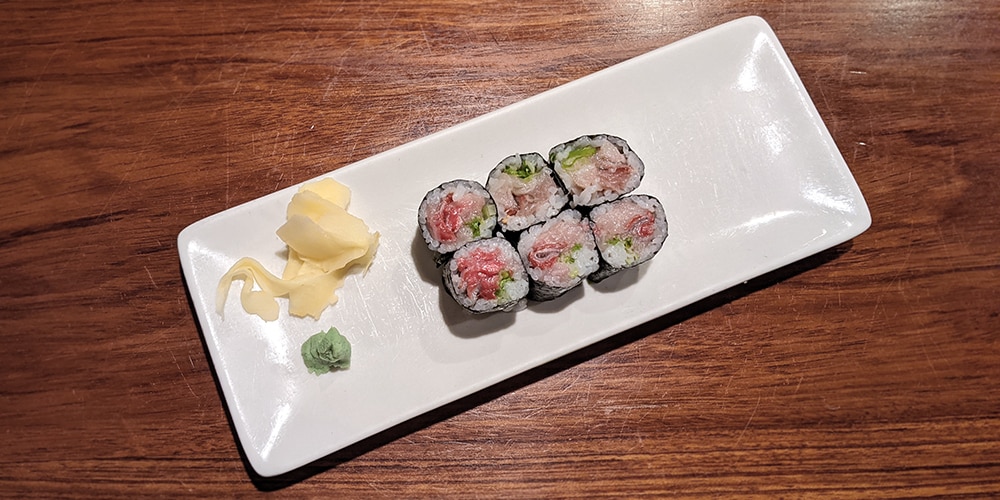
Negihama
Negi hamachi (ねぎはまち) a combo of minced yellowtail and green onion or scallion. This is a common type of hosomaki and temaki. It’s also frequently made into gunkanmaki.
Negihama is probably a spinoff of negitoro. And its origins are less clear.
Check out our negihama post to learn about its ingredients, variations, and how to make your own.
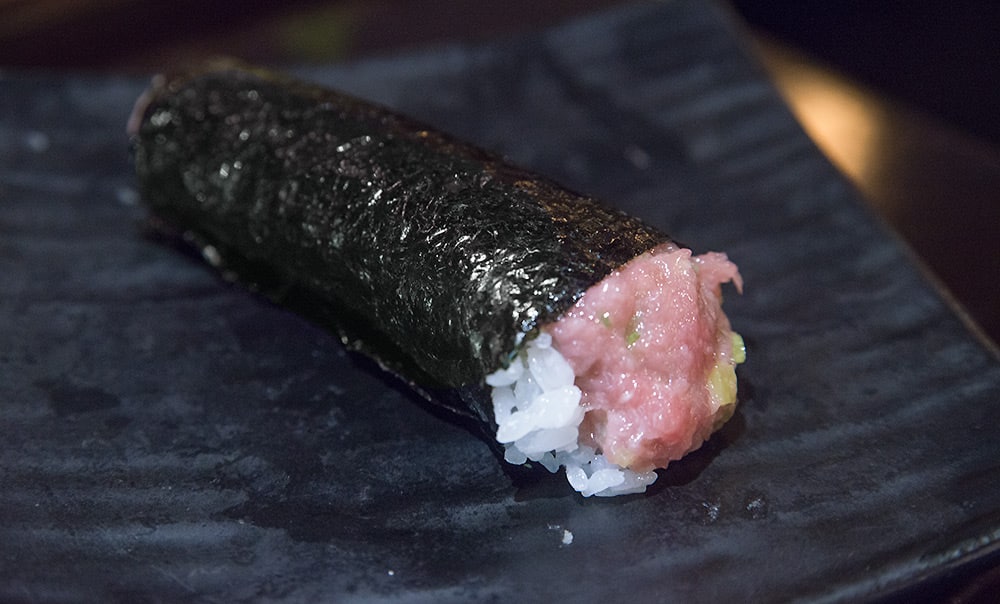
Negitoro
Negitoro (ネギトロ) is made of minced tuna and green onion. So it’s similar to the negi hamachi.
It’s a common misconception that negitoro means negi (scallion) and toro (fatty bluefin belly). But the name for this dish was originally negitoru. This means to scrape off or to chip. It refers to the act of scraping the meat around the bones. This could be any type of tuna. The name evolved into negitoro over time.
So negitoro doesn’t have to use toro. In Japan, it’s just as common to find it made with lean bluefin (akami), bigeye tuna, or even a combination of yellowfin and albacore.
Gunkan, hosomaki, and temaki negitoro are all popular. But donburi is the original version, which is still very popular in Japan.
Check out our negitoro post if you want to learn more.
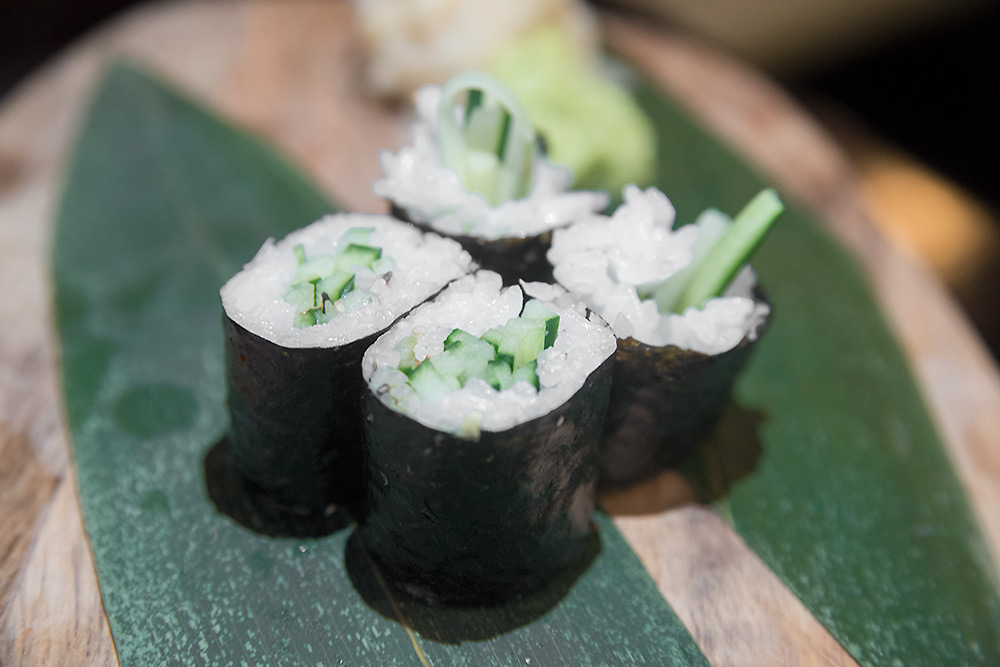
Kappa Maki
A cucumber roll made in a hosomaki style is often called a kappa maki. The name is derived from the legendary kappa, a green water sprite that loves to eat cucumbers.
This classic sushi roll is sometimes called the kyuri maki.
Check out our full-length post on all things kappa maki.
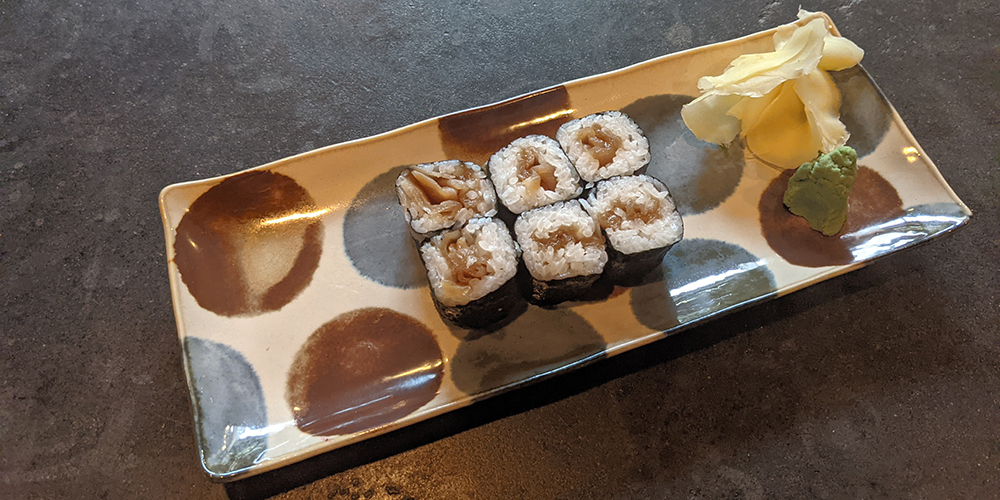
Kanpyo Maki
The kanpyo maki is the classic Edomae sushi roll and is prepared in a hosomaki style.
It’s made with kanpyo, which is dried and shaved gourd. This is then soaked in water, boiled, and marinated in soy sauce and sugar. This crunchy and sweet roll is traditionally eaten later in the meal.
Learn about kanpyo sushi with our helpful guide.
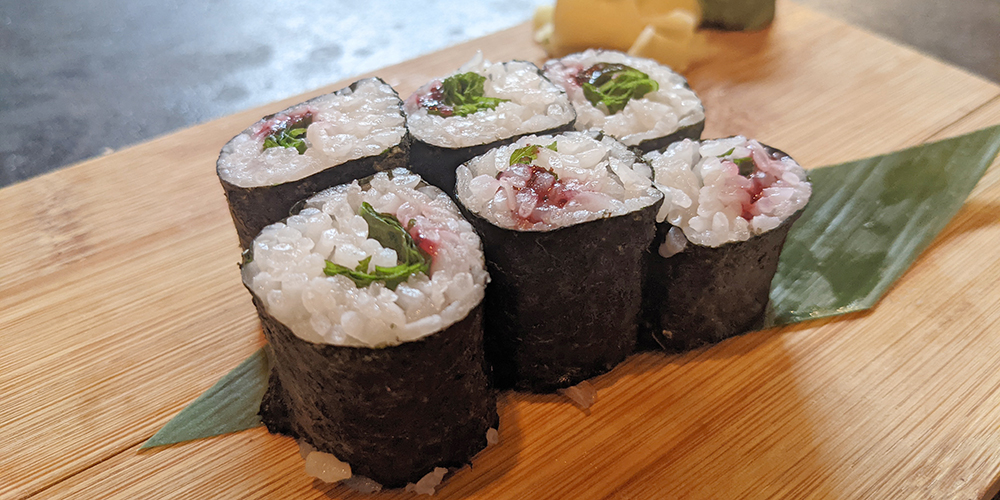
Ume Shiso Roll
Ume and shiso are a classic combination in hosomaki. This thin roll is made with ume paste or diced umeboshi, plus green shiso leaves.
The ume shiso maki is sour, salty, minty, and refreshing.
Check out our informative ume shiso guide to learn all about this sushi classic.
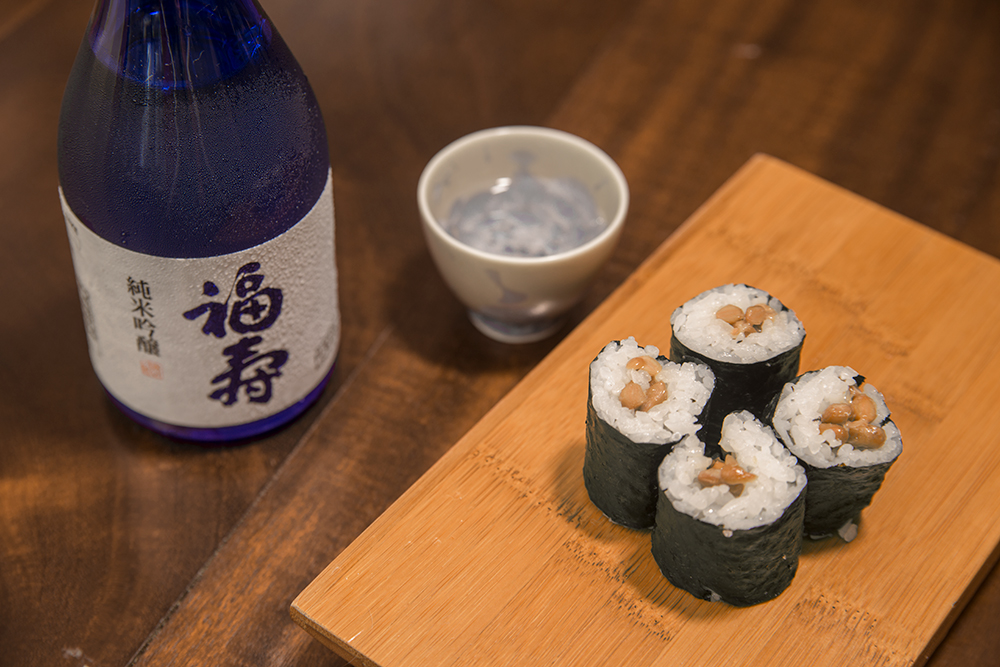
Natto Roll
Natto is fermented soybean. It’s usually eaten with rice. And one of the best ways to enjoy this funky, sticky superfood is in a sushi roll.
Take a look at our natto sushi guide to learn all about this classic Japanese superfood.
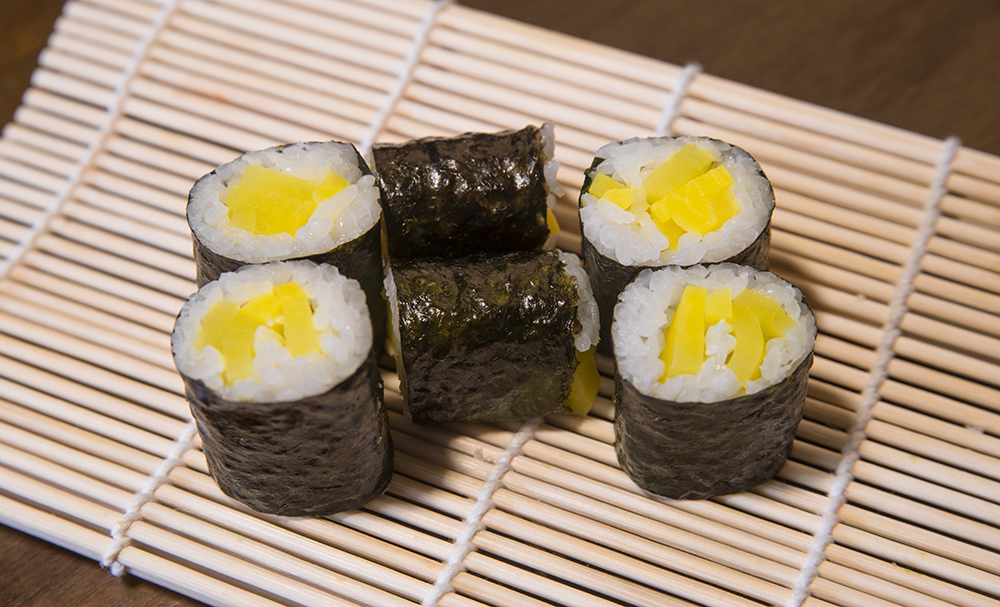
Oshinko Roll
Oshinko are pickled vegetables and a type of tsukemono. Traditionally, this means quick-pickled vegetables – not fermented ones. But today, tsukemono and oshinko are often used interchangeably.
The oshinko maki is a popular vegetarian sushi roll. It’s usually made with takuan. Sometimes it’s called a takuan maki for this reason.
Oshinko rolls have a crunchy texture with a sweet, salty, and pungent taste. They’re delicious. Plus they’re good for you and affordable.
Take a look at our oshinko roll post to learn a lot more about this classic sushi roll.
Spider Roll
The spider roll is a North American classic served with fried soft shell crab and other ingredients. It’s often served in a futomaki style.
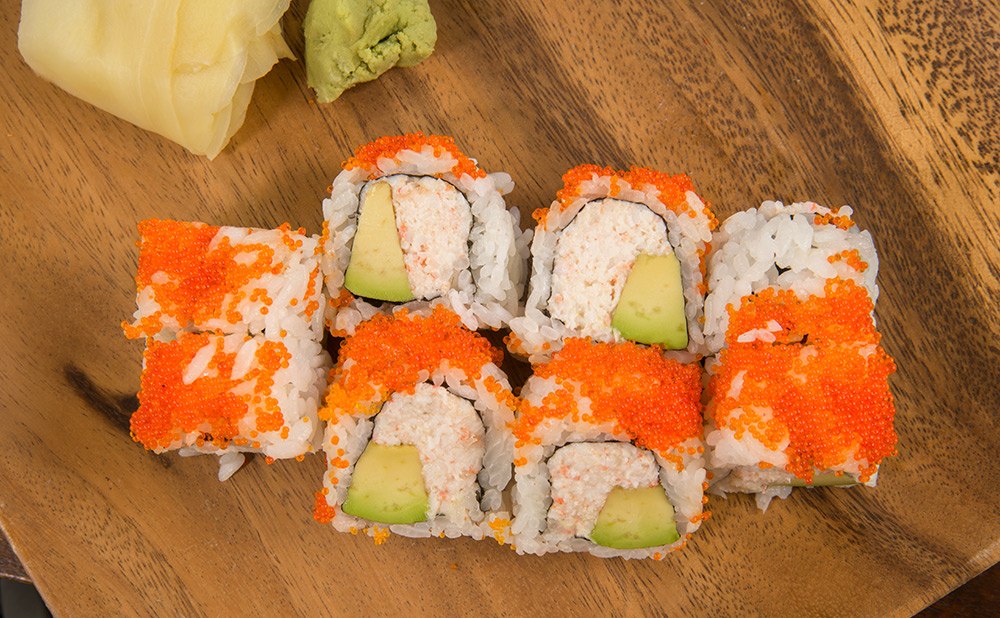
California Roll
The California roll, which was invented in British Columbia, is the original uramaki. It uses crab or imitation crab (kanikama) and avocado inside. Cucumbers and kewpie mayo are often included, as well.
Check out our California roll guide to this Western sushi classic!
Philly Roll
The Philly roll is another Western-style uramaki. It uses cream cheese and salmon (smoked or raw) inside. Cucumber and green onions are often used too.
Spicy Tuna
The spicy tuna is an uramaki with minced tuna inside and some sort of spicy sauce.
Sriracha-based sauces are the most common in this highly popular Americanized roll. Cucumber is another common ingredient alongside the tuna mixture.
Ebi Tempura Roll
The ebi tempura roll features a piece of shrimp tempura, along with other ingredients. It’s usually prepared in an uramaki or futomaki style.
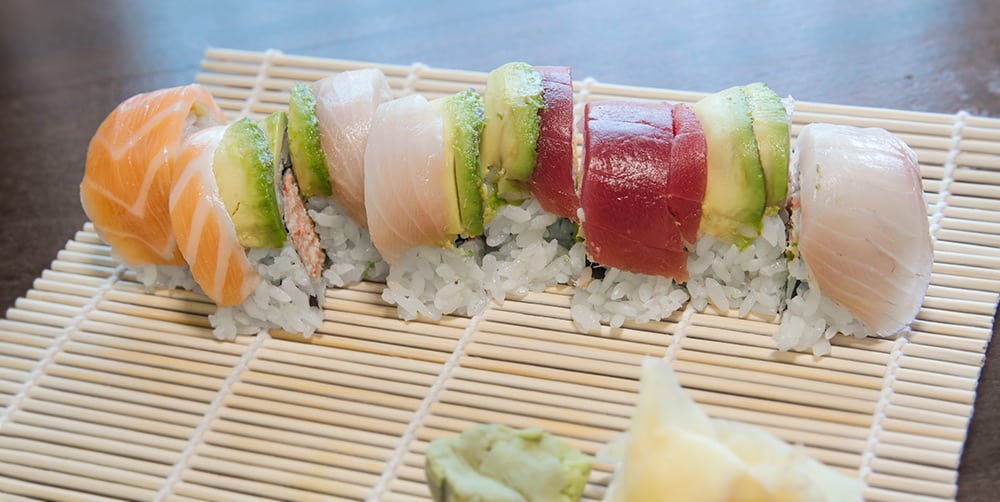
Rainbow Roll
The rainbow roll is an Americanized sushi roll with a colorful appearance. It is a California roll with a variety of sashimi-style slices of fish layered over the top. Tuna, salmon, yellowtail, and ebi are often used, though there is no standard.
The main aspect of the fish toppings is that they are of different colors. Avocado is almost always included, as well.
Learn about the rainbow roll, its history, ingredients, and variations with our full-length post.
Dragon Roll
A dragon roll is typically an elaborate version of an ebi tempura roll. Unagi, and sometimes avocado, are layered over the top of this large uramaki.
Caterpillar Roll
The caterpillar roll is a large uramaki that uses unagi and avocado. The eel is inside of the roll along with other ingredients. The avocado is layered over the top. Eel sauce is usually drizzled over this colorful sushi roll.
Types of Seafood and Meat for Sushi
There are many types of fish, shellfish, and meat that one might find on a sushi menu, and it can be overwhelming to the beginner.
Below we list many of the most common types of ingredients you’ll find served as nigiri, sashimi, makizushi, and chirashi.
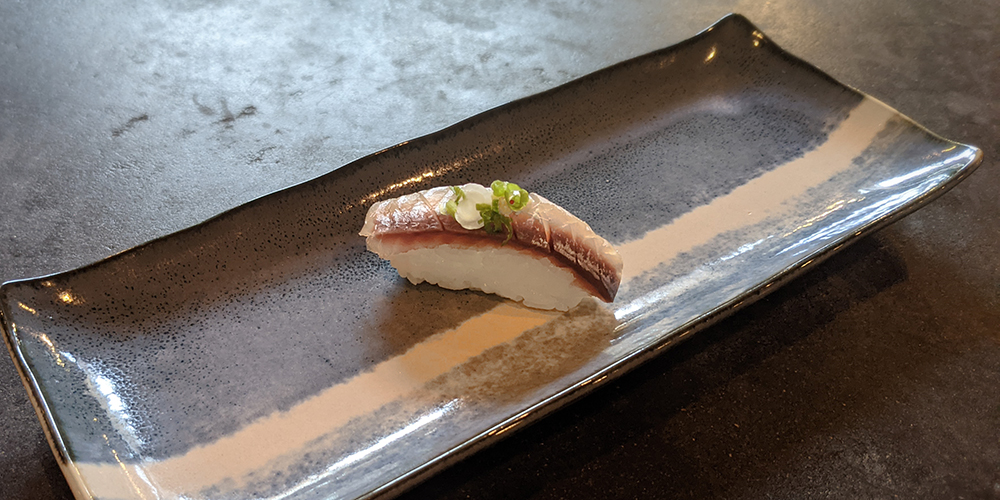
Aji – Horse Mackerel
Aji, or horse mackerel, is a classic fish that’s used for nigiri sushi and sashimi. This small fish is considered by chefs to be a hikarimono, or silver-skinned fish. It has a firm texture, rich umami, and only a faint fishiness.
Aji is beloved in Japan. But it can be hard to find in the US.
Horse mackerel is not actually a species of mackerel. Instead, it’s in the jack family. this means aji is more closely related to kanpachi and hamachi.
There’s too much to cover here. Check out our complete aji sushi guide to learn all about this delicious fish.
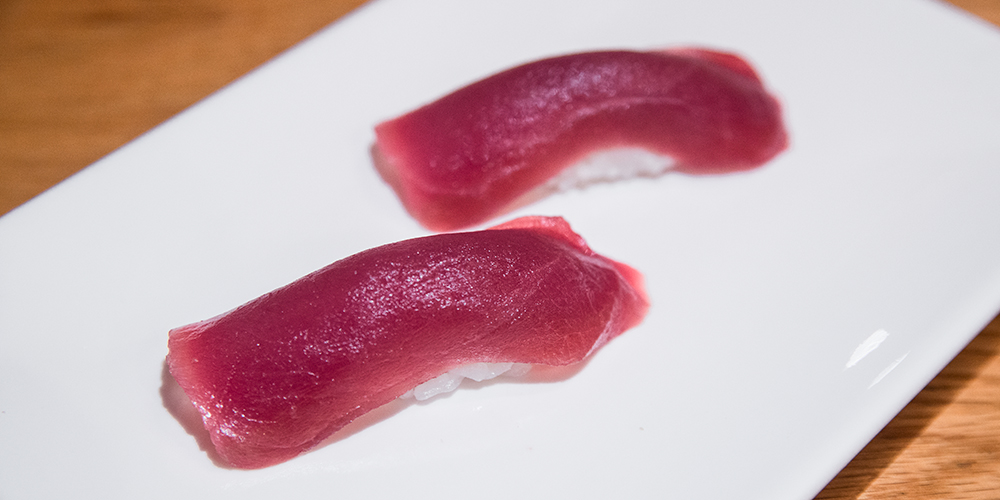
Akami – Lean Tuna
The lean red meat from tuna is called akami. It’s sourced from the tuna’s back. Akami is firm and mild flavored. It is often used in nigiri, sashimi, and maki sushi.
There are several cuts of akami, though usually the specific cut won’t be listed on the menu. The senaka portion is the most prized akami. It’s in the middle of the back. Next in quality is the sekami portion above the pectoral fin. Finally, the seshimo cut of akami, near the tail, is considered the lowest quality.
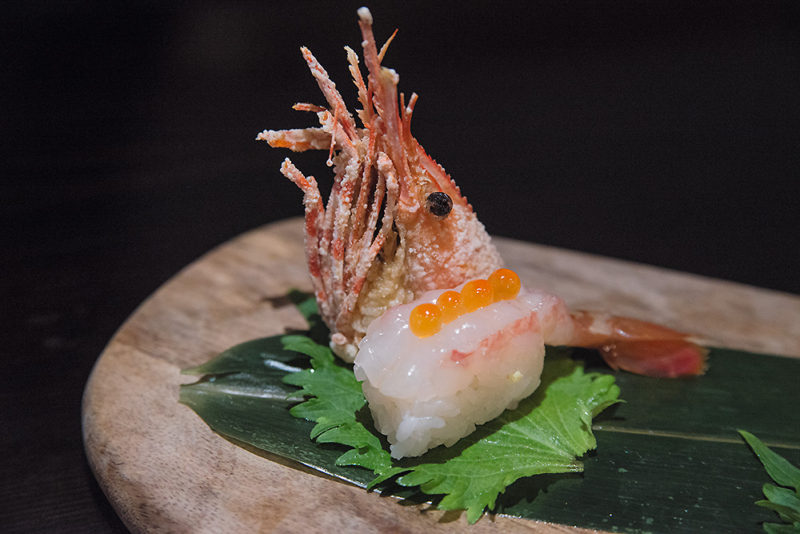
Ama ebi – Sweet Shrimp
Ama ebi (甘いえび), or sweet shrimp, is often served raw as nigiri or sashimi. The head is typically fried and served along with the body piece. This is called atama.
Ama ebi has a mildly sweet flavor and a semi-firm texture.
Sweet shrimp deserves a lot more love. Check out my ama ebi sushi guide to learn all about this unsung hero of the sushi bar.

Anago – Saltwater Eel
Anago (穴子, or アナゴ) are young conger eels (ma anago マアナゴ). They’re popular as nigiri sushi and have a mild, sweet flavor with a semi-soft texture.
The conger filets are usually simmered before being served. Tsume, or eel sauce, is often brushed on top.
Learn about anago sushi, kabayaki, and tempura with our informative guide.
Awabi – Abalone
Awabi (鮑) are large sea snails. Generally, the male awabi is served raw as nigiri or sashimi. They have a crunchy texture and a delicate, clean flavor profile.
Awabi is not sustainable, severely overfished, and is very expensive.

Basashi – Horse Sashimi
Basashi (馬刺し) is raw horse meat and is typically served as sashimi. Many different cuts of basashi are used. The flavor of basashi is mild and sweet, with clean umami.
Basashi is a famous dish from Kumamoto, but it can also be found in other parts of Japan. It’s very tasty paired with earthy junmai or honjozo sake. A more traditional pairing would be with Kumamoto rice shochu.
Buri
Buri (鰤) is another name for Japanese amberjack. This is the same fish that’s often called hamachi. And confusingly, it goes by many other names, depending on the season and location it’s caught.
In general, the term buri usually refers to the wild-caught and fully mature version of the fish, which is often caught in the winter.
If you’d like to learn more, our hamachi guide covers this subject in more depth.
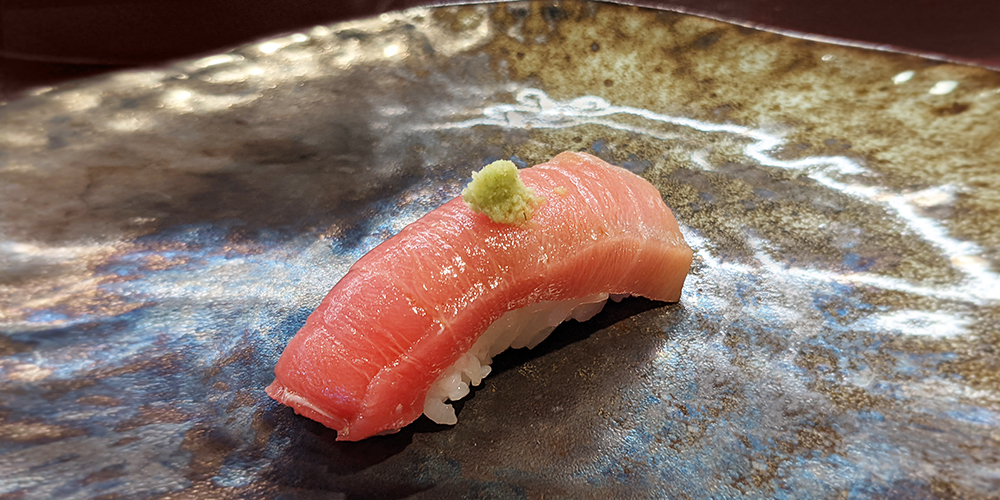
Chutoro
Chutoro is a medium-fatty tuna belly and is prized as nigiri and sashimi. Chutoro almost always comes from bluefin tuna.
The sides of the belly are where this cut is sourced. This part of the fish is sometimes called haranaka.
Check out my medium-fatty tuna guide to learn about chu toro sushi and sashimi, how it compares to other toro, and its sustainability.
Ebi
Ebi is the word for shrimp, and there are many different kinds. They’re popular as tempura and as sushi. And some larger types of ebi are occasionally grilled.
Most of the time, ebi in the US will be cooked. It has a sweet flavor and a firm but tender texture.
Ebi are simply delicious. Learn all about ebi sushi, types of ebi, and how to prepare them with this informative post.
Engawa
Engawa (縁側) is the fin muscle from a fluke or flounder. This piece is usually either flame-seared (aburi) or scored to make it more tender. Engawa is generally served as nigiri.
Engawa has a crunchy, semi-chewy texture. But its flavor is mild and sweet. Only a handful of pieces of engawa can be obtained from an individual fish, so you’ll rarely find it on a menu.
Engawa is not for beginners because of its texture, but it should be on every sushi pro’s list.
Fugu – Pufferfish
Fugu (フグ) are pufferfish and are a sashimi and nigiri delicacy. You’ll find them in hot pots, as well. Fugu contains deadly toxins and only trained chefs can prepare this fish carefully.
Gindara – Sablefish
Gindara (銀鱈, ぎんだら) is sablefish or black cod. You won’t likely find gindara served raw. It makes a delicious and sustainable substitute for unagi sushi.
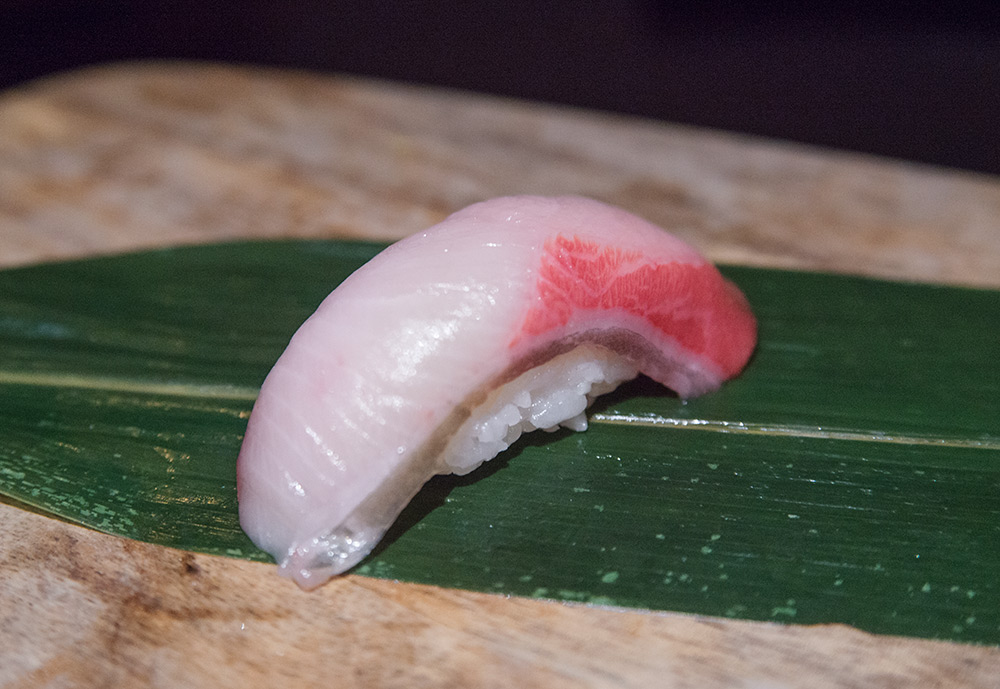
Hamachi – Yellowtail
Hamachi (魬, はまち) is yellowtail – a super popular fish for sushi and sashimi. It’s considered a type of iromono (colored fish).
Most of the hamachi you’ll encounter is farm-raised.
Yellowtail cheeks (kama) are delicious grilled and are also worth seeking out.
To learn more, check out our informative hamachi guide. It covers species info, common preparations, beverage pairing recommendations, and more.
Hikarimono – Shiny Fish
Hikarimono are shiny fish. This is a broad, informal class of fish with a silvery appearance.
They’re sometimes called blue-back fish.
Hikarimono tend to be strong in flavor. Common hikarimono include aji, saba, sawara, nishin, iwashi, sanma, and kohada.
These fatty, full-flavored fish often deteriorate rapidly. For this reason, they can be a challenge to find as sushi or sashimi.
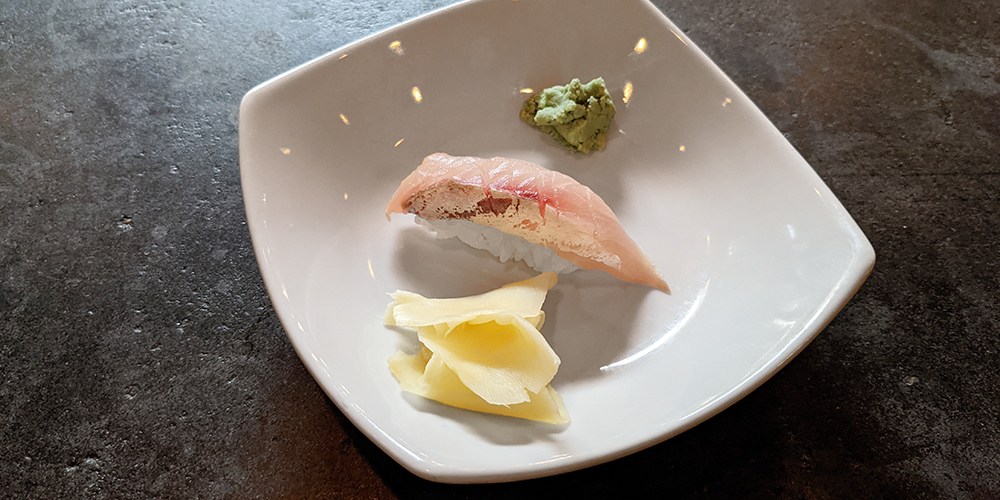
Hiramasa – Yellowtail Amberjack
Hiramasa (ひらまさ) are similar to hamachi and are another member of the amberjack family. It’s used exactly like hamachi for sushi, sashimi, and kama.
Hiramasa has a firm texture plus a clean, slightly sour flavor.
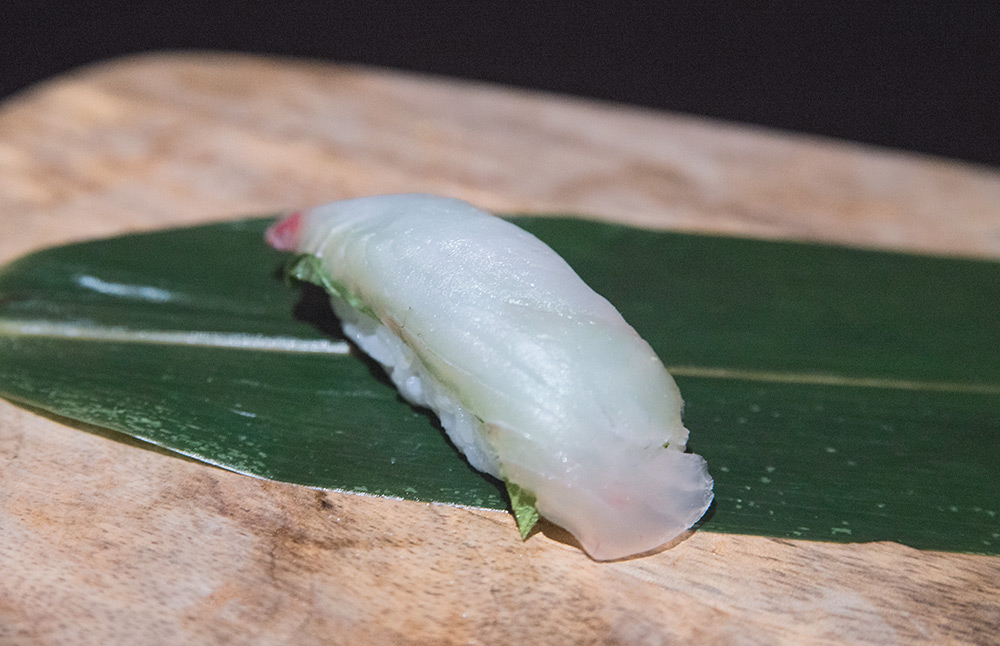
Hirame – Flounder
Hirame (平目, ひらめ) are left-eyed flounders. They’re very popular as sushi and sashimi.
Hirame is classified as a kind of shiromi, or white-fleshed fish.
The texture of hirame is firm, and most have a mild, semi-sweet taste.
There are a few species of fish that are used to make hirame including olive flounder and (Atlantic) summer flounder.
Check out our hirame guide to learn about the various species, seasons, and beverage pairing recommendations. There are also some helpful videos on preparing hirame at home.
Hokkigai – Surf Clam
Hokkigai is the Japanese name for Arctic surf clam. This is a popular clam for nigiri, sashimi, and chirashi. Hokkigai has a red and white color.
Like most clams, hokkigai has a crunchy texture with a clean, sweet taste.
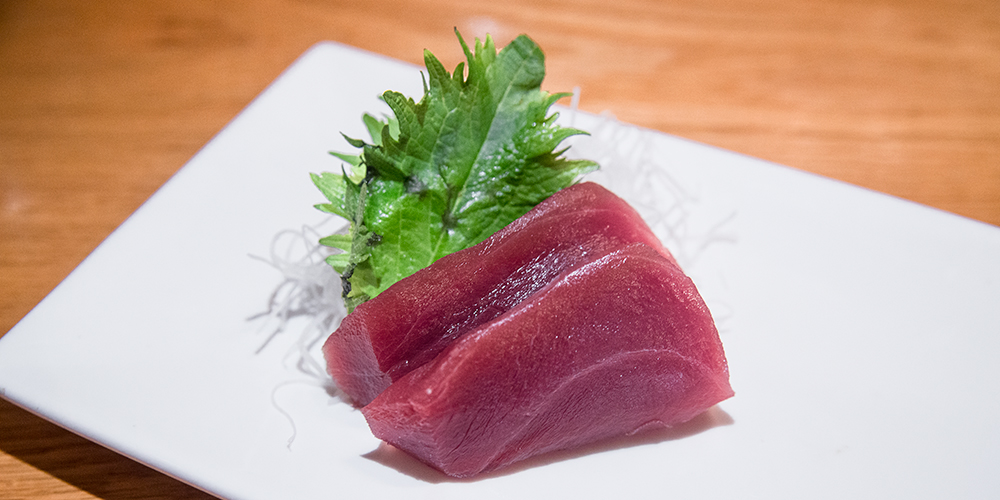
Hon Maguro – Bluefin Tuna
Bluefin tuna is called hon maguro (ほんまぐろ). There are a few species, and they’re all extremely popular as sashimi and sushi.
All of the species of bluefin are overfished and not sustainable. Farm-raised bluefin is growing in popularity, but it’s only slightly more sustainable. The flavor and texture of farm-raised hon maguro is also thought to be inferior.
Learn more about hon maguro sushi, toro, and akami with this popular post.
Hoshi garei – Starry Flounder
Hoshi garei (星鰈) is a prized flatfish. It’s most often found in nigiri or sashimi form. Hoshi garei is pricey. It’s a summer seasonal fish.
Hotaru Ika – Firefly Squid
Hotaru ika (ホタルイカ) are firefly squid. This small species of squid can sometimes be found as nigiri or sashimi.
Hotaru ika can be served raw or boiled. You’ll usually find them available in the spring and early summer.
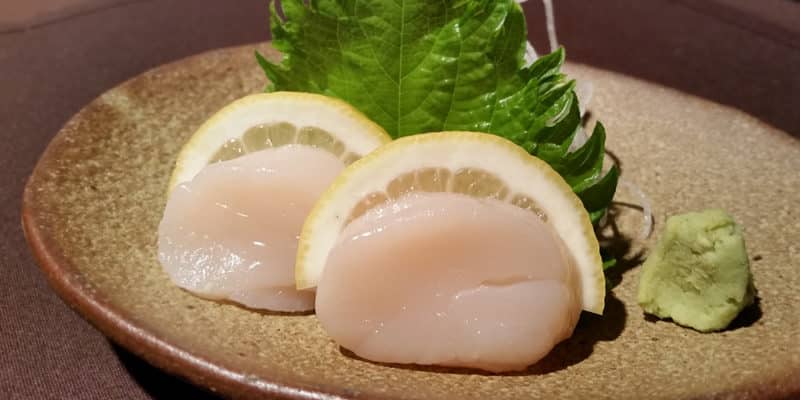
Hotategai – Scallop
Hotategai (帆立貝) are scallops and very popular as sushi and sashimi. The flavor of hotategai is said to be best from late fall through the early spring.
The texture of scallops is semi-soft texture, and they have a clean and sweet flavor.
Learn more about hotate sushi and sashimi with our informative guide.
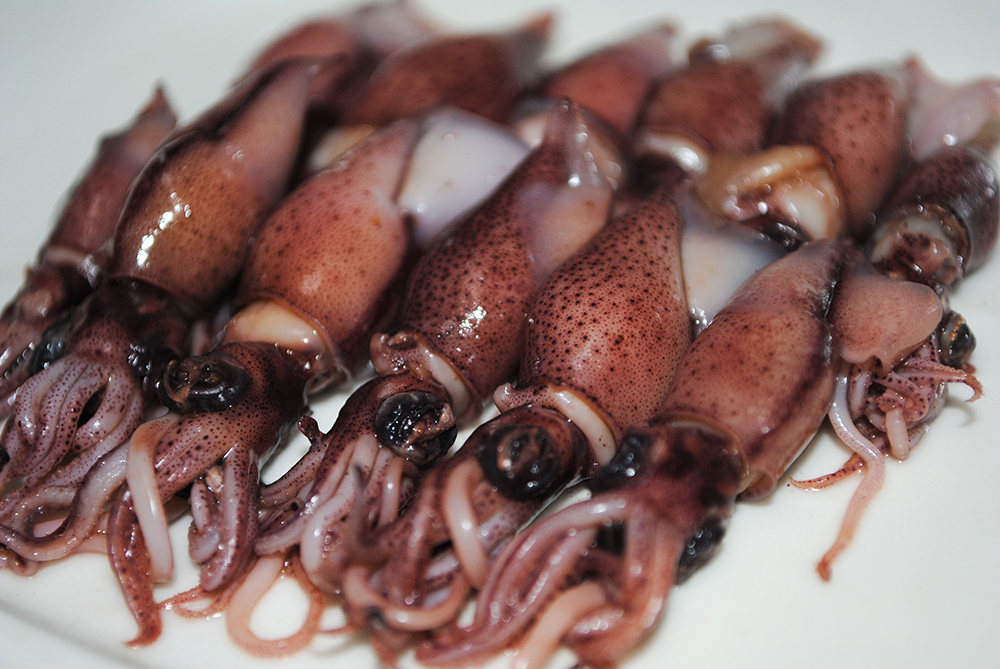
Ika – Squid, Cuttlefish
Ika (いか) is a general term for squid and cuttlefish. Ika is prepared in a variety of ways and is popular as sushi and sashimi.
There are several prized varieties sumi, aori, and hotaru ika.
Surume ika is a common type served in Japan.
Raw or parboiled squid and cuttlefish are typically firm-textured in textured but mild in flavor.
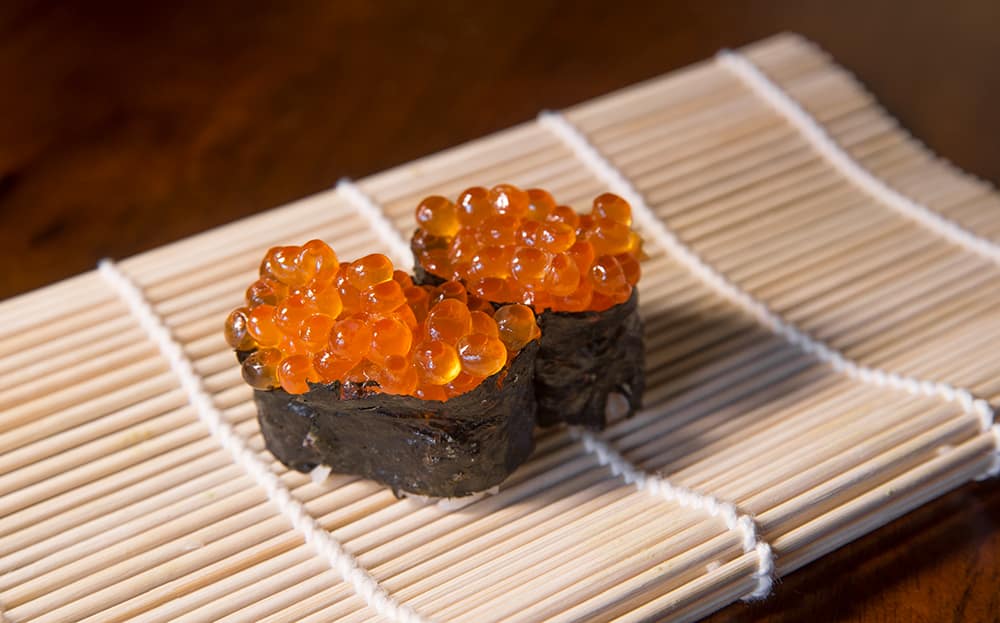
Ikura – Salmon Roe
Ikura (イクラ) is the word for salmon and trout roe. They’re typically cured with shoyu and/or salt. Additionally, mirin or sugar sometimes are used during curing.
Many species of salmon are used for their ikura. Chum salmon are by far the most common species used.
Check out our detailed guide on ikura. It includes information about salmon species, nutritional info, sustainability, and more.
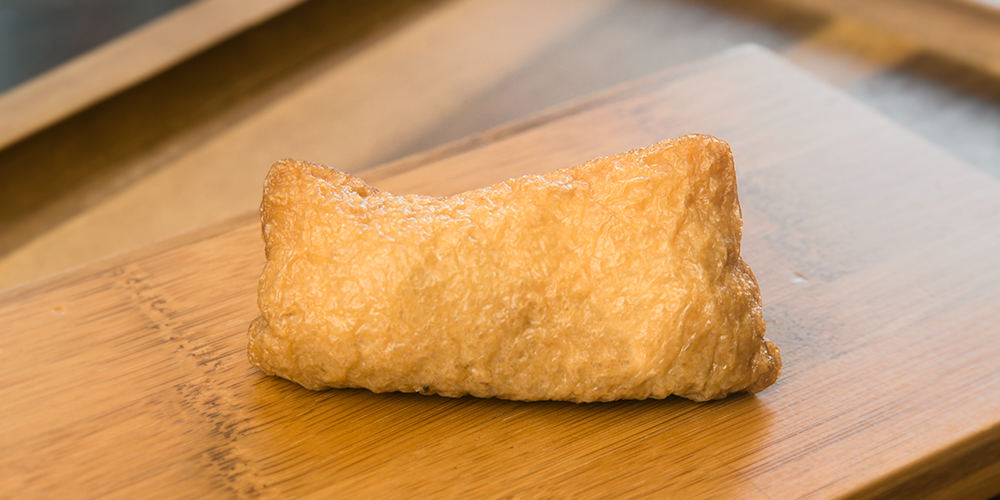
Inari Sushi
Inari (いなり) is a fried tofu pocket that has been marinated in dashi and shoyu. Inarizushi is a sushi restaurant staple. The inari is stuffed with sushi rice in this case.
Inari sushi is a classic, everyday Japanese food. Learn how it tastes and how to make it with our inari guide.
Iromono – Colored Fish
Iromono (色物) is a term for colored fish. It’s a small category that mainly includes jacks like hamachi, kanpachi, and shima aji.
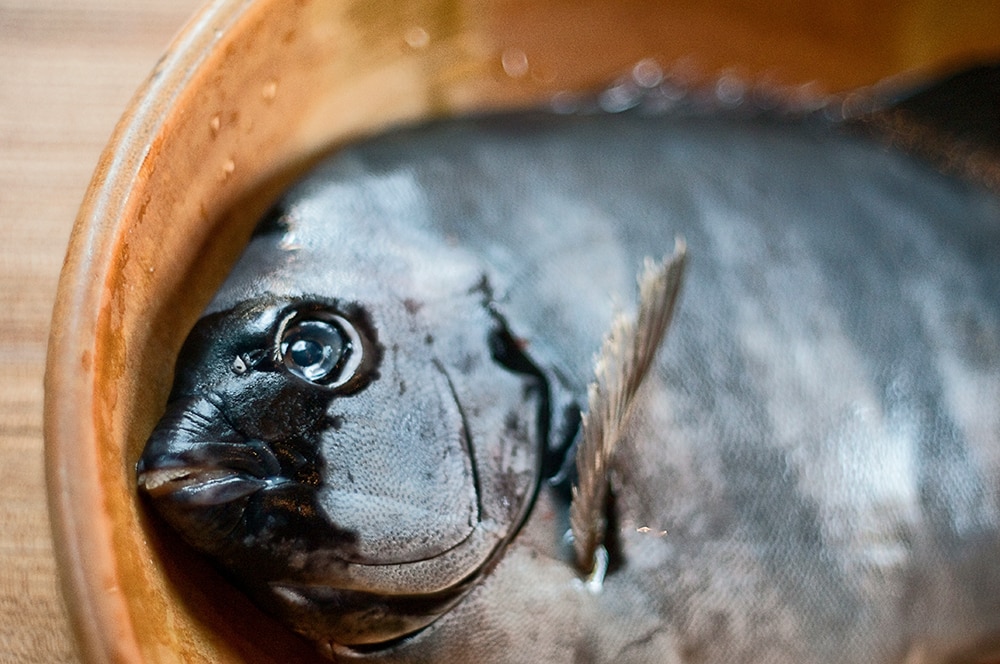
Ishidai – Striped Beakfish
Ishidai (イシダイ) is a black and white striped fish that’s grouped in the shiromi category. You’ll typically find it served as nigiri or sashimi.
Ishidai has a clean flavor and is firm-textured.
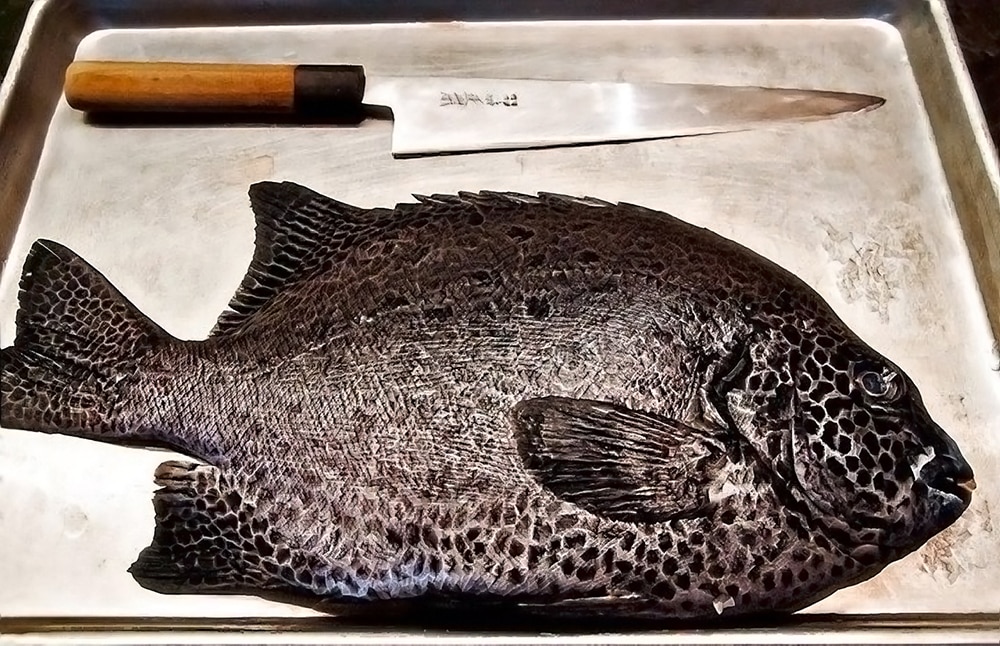
Ishigakidai – Spotted Knifejaw
Ishigakidai looks similar to the ishidai, but it has spots instead of stripes.
Ishigakidai is considered a shiromi with mild, clean taste and firm texture.
Itoyori – Threadfin Bream
Itoyori (糸縒鯛) is an uncommon fish at the sushi bar that sometimes is called the golden threadfin. It makes tasty nigiri and sashimi.
Itoyori has a firm texture and a mild taste.
Iwashi – Sardine
The iwashi (イワシ) is a type of sardine. It can occasionally be found as sushi and sashimi. Usually, they’re salted and marinated in rice vinegar. Iwashi is considered a type of hikarimono.
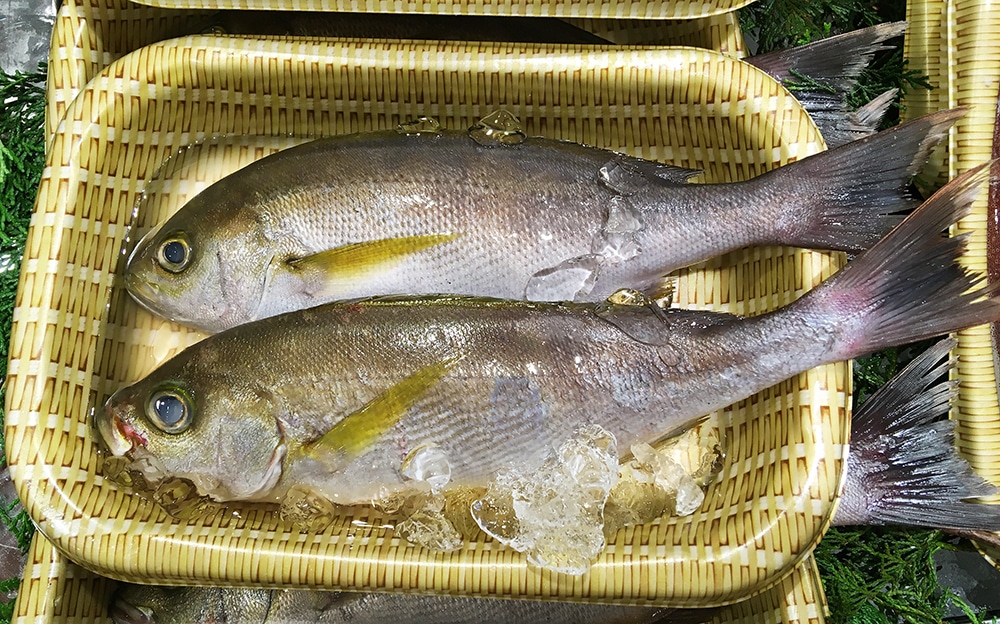
Isaki – Chicken Grunt
Isaki (伊佐木), or izaki, is a type of shiromi that can occasionally be found as nigiri and sashimi. It’s usually available in the summertime.
The flesh of an izaki has a barred pink and red color and is firm-textured. Like most shiromi, it has a mild and sweet flavor.
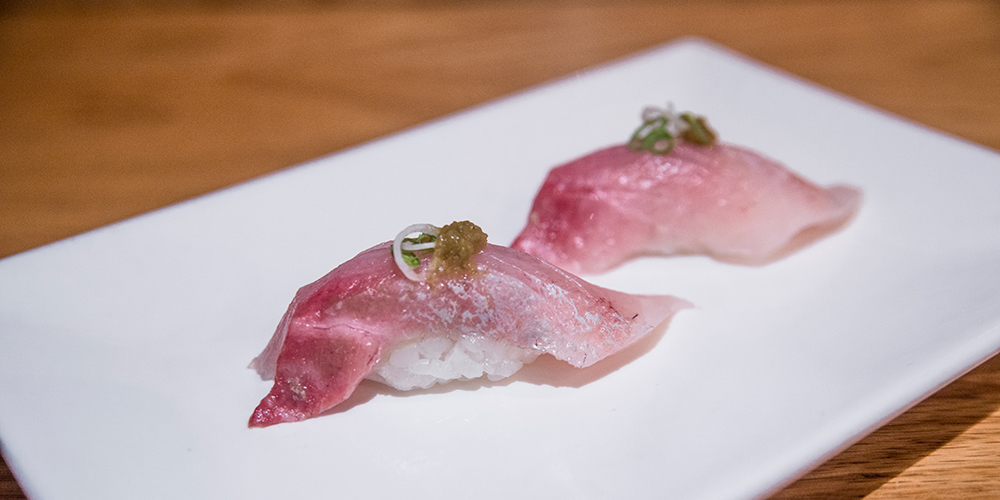
Kanpachi – Greater Amberjack
The kanpachi (間八) is a large species of fish that’s closely related to hamachi.
Kampachi is a common misspelling of the same fish.
Their texture tends to be firmer than yellowtail, but they have a flavor that’s also slightly sour and mild.
There’s too much to cover here. Check out our kanpachi guide for a full breakdown of this amazing fish, what it tastes like, how to prepare it, and beverage pairings.
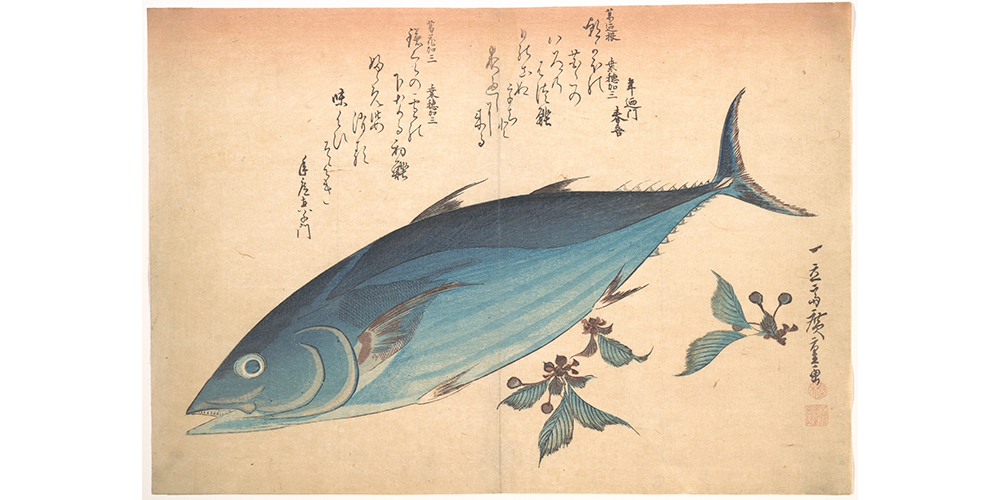
Katsuo
Katsuo (かつお, 鰹) is the name for skipjack tuna and bonito. It’s very popular in sushi and sashimi. It’s also commonly served tataki-style.
Learn all about katsuo, katsuobushi, and bonito flakes on my complete guide to skipjack tuna.
Kihada – Yellowfin Tuna
Kihada (黄肌) is the Japanese name for yellowfin tuna. It’s a large but lean fish and is commonly used in sushi and sashimi. Bigeye tuna is a more popular choice in North America, however.
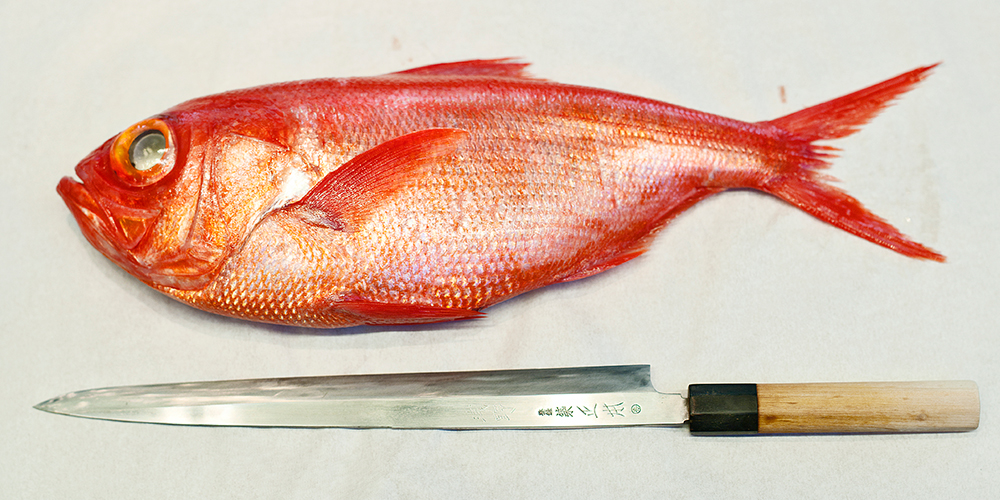
Kinmedai – Splended Alfonsino
Kinmedai (金目鯛) translates to bigeye snapper. It’s a deep-sea fish with huge eyes and beautiful color.
Kinmedai is considered a type of shiromi, or white fish. It has more flavor than many shiromi, but is still mild and sweet. The flesh is often flame-seared or splashed with boiling water, then chilled.
The seasons for kinmedai are winter and spring.
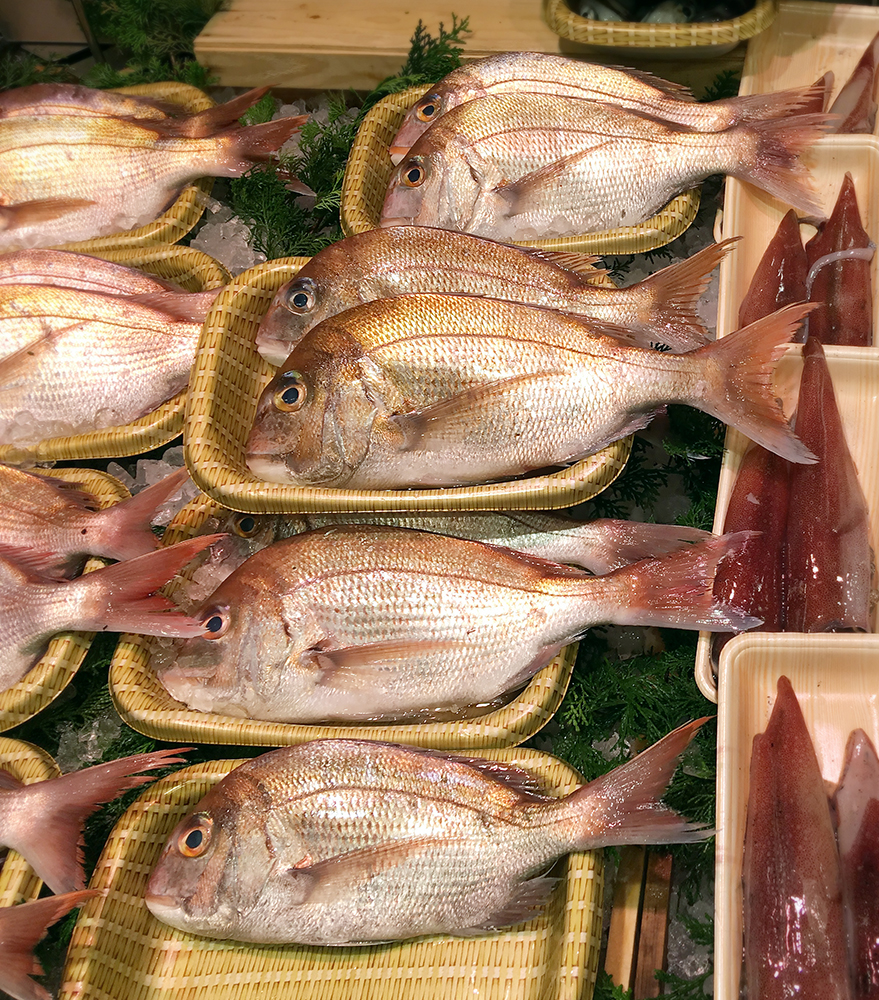
Madai – Red Sea Bream
Madai (まだい, 真鯛) is an extremely popular type of bream or tai. It’s commonly found in nigiri and sashimi. Madai is considered a type of shiromi. It has a clean, slightly sweet taste and a firm texture.
Learn more about sea bream with my madai sushi guide. Learn how it tastes, common presentations and dishes, beverage pairings, and more.
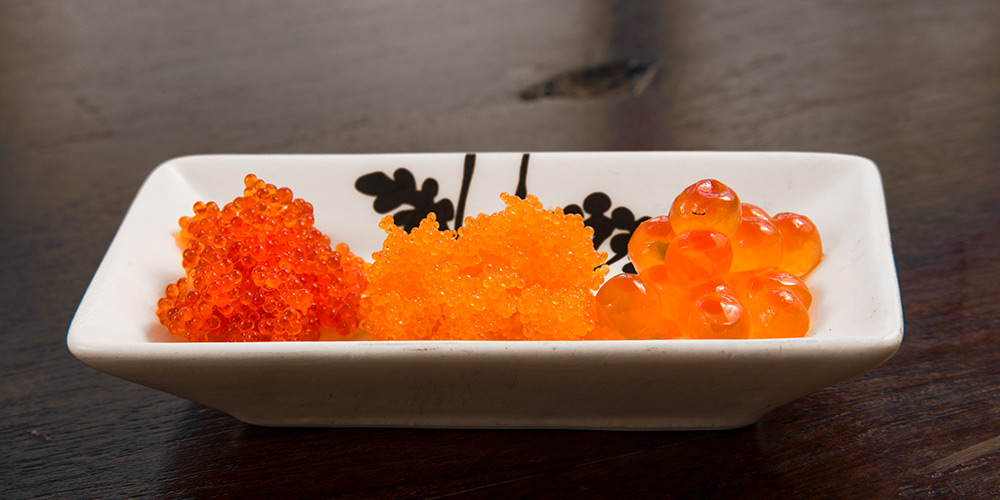
Masago – Smelt Roe
Masago (まさご) are the roe of Pacific capelin, which is species of smelt. It’s a popular option for gunkanmaki, on rolls, and chirashi.
Masago is pale orange. They’re usually dyed bright orange. Masago is a more affordable alternative to tobiko.
Check out our post on masago and tobiko!
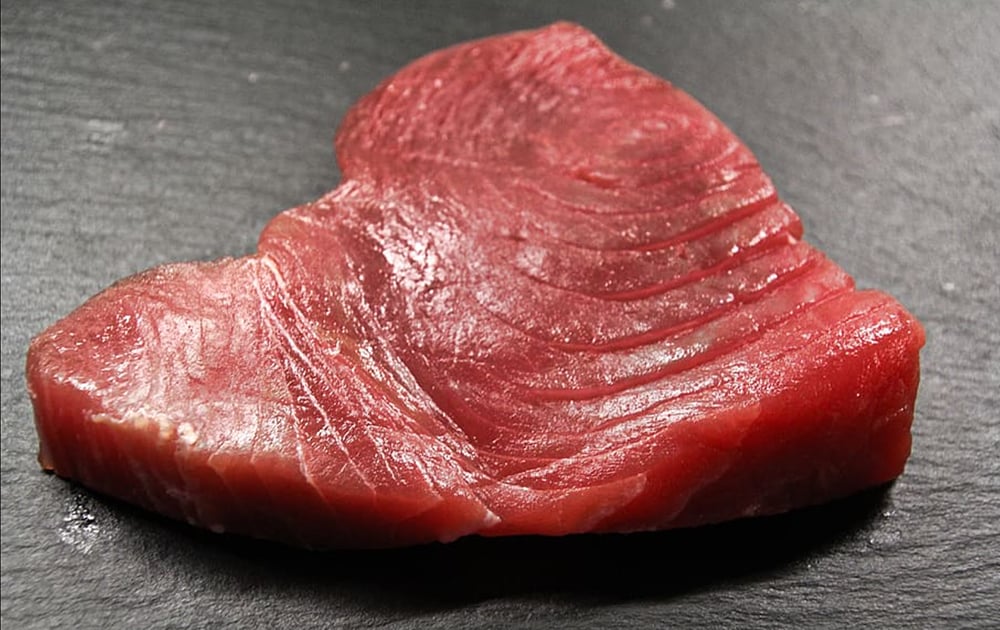
Mebachi Maguro – Bigeye Tuna
Mebachi maguro (目撥鮪) is a large tuna. They have a dark red color and a meaty texture. Mebachi maguro is a common choice for nigiri, sashimi, and maki. Its flavor is richer and less fishy than yellowfin. Confusingly, both mebachi and yellowfin are called ahi tuna.
Because of a scarcity of tuna, younger mebachi maguro is often harvested. In this case, it’s are paler and has a mildly sour flavor.
I wrote an entire post on mebachi maguro sushi and sashimi. You’ll learn what it tastes like, how it stacks up against other tunas, nutritional info, and more.
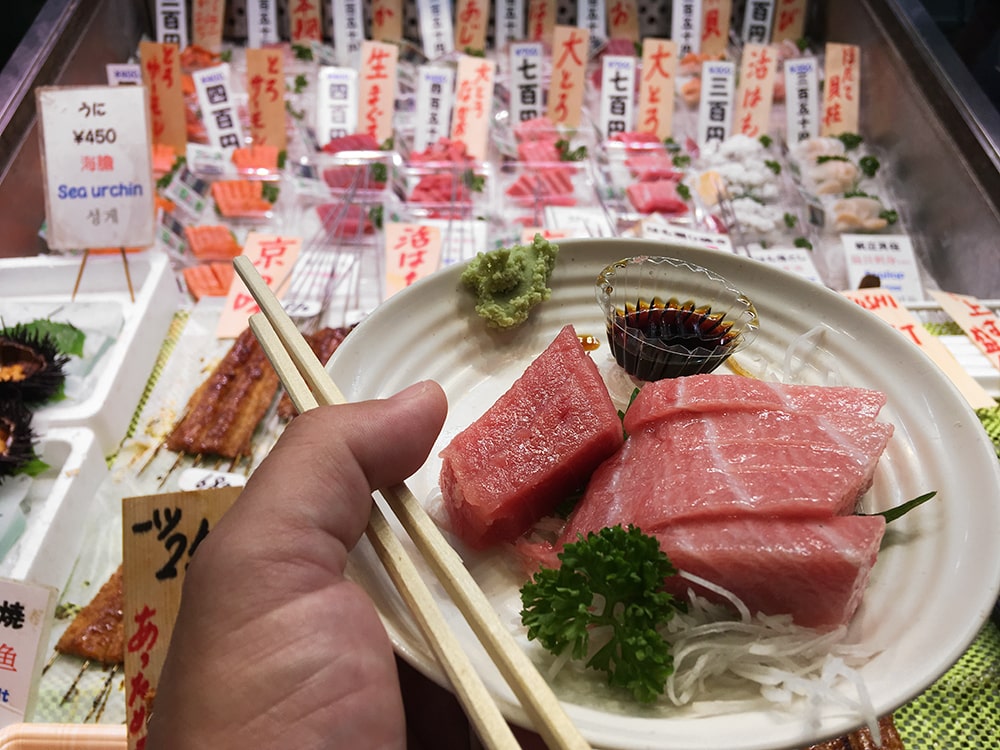
Otoro – Extra Fatty Tuna
Otoro (大トロ) is a fatty belly cut of bluefin tuna. It has become a premium sushi and sashimi option.
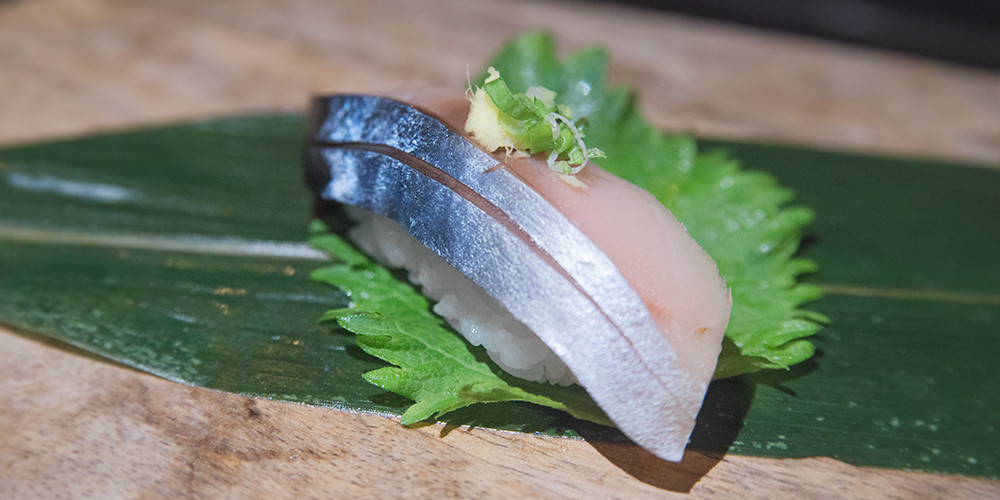
Saba – Mackerel
Saba (さば, 鯖) means mackerel and most often refers to the chub mackerel. This is an oily fish with a lot of fat, despite its small size. They are classified as hikarimono and can taste salty and sour.
Saba does not store well and is often preserved with salt and sake vinegar. When prepared this way, it’s often called shime saba. It adds a bit more sourness and keeps the texture firm.
Check out our complete saba guide to learn about this fish, how it’s prepared, beverage pairings, and more.
Sanma – Pacific Saury
Sanma (さんま, 秋刀魚) is a long, skinny species that are sometimes called pike mackerel. They’re typically available in the late summer and fall.
Sanma is occasionally served as nigiri and sashimi but they are usually cooked.
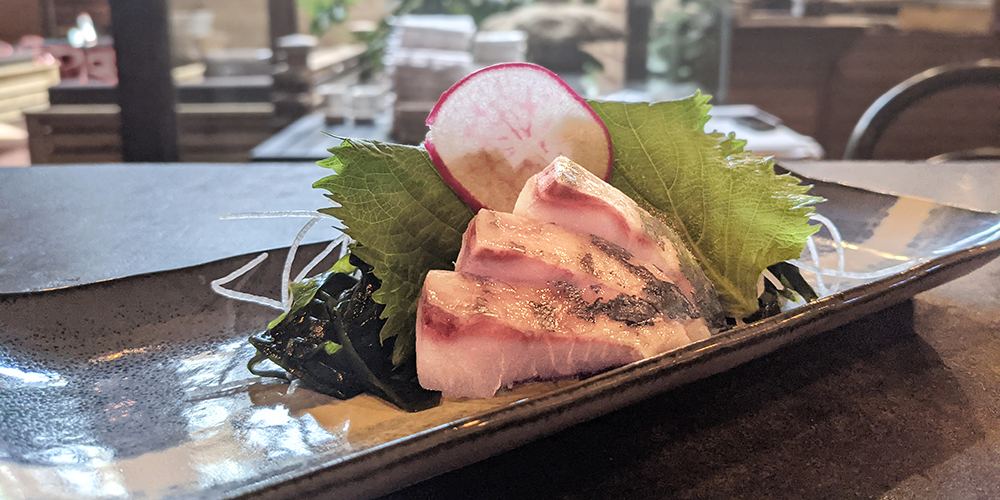
Shima Aji – Striped Jack
Anyone that loves yellowtail or amberjack needs to know about striped jack. Called shima aji (縞鯵) in Japan, this fish is like a small hamachi.
Check out my shima aji guide to learn all about what this fish tastes like, where it’s found, and dishes that utilize the fish.
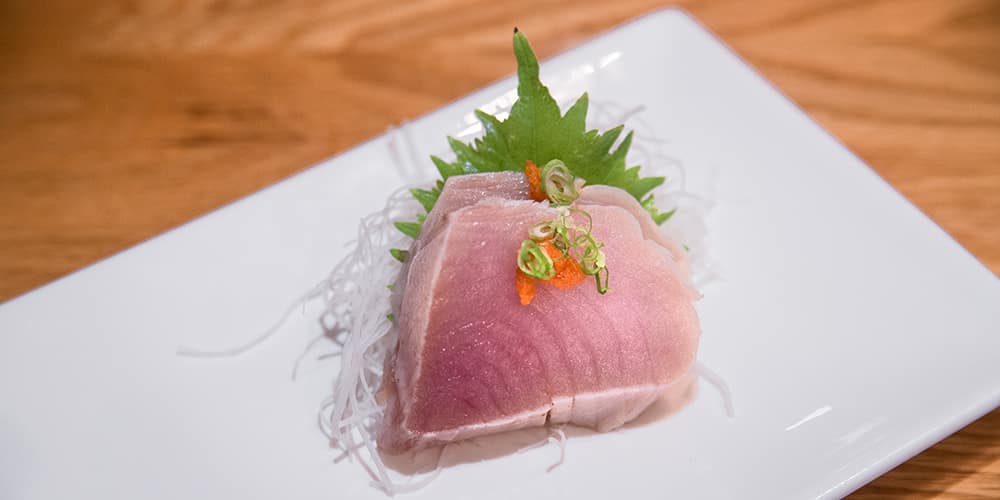
Shiro Maguro – Albacore Tuna
Albacore tuna have several names in Japan: shiro maguro, bincho maguro, and binnaga (鬢長, びんなが) maguro are all used. This is a small tuna with a few species in different oceans.
This is a common fish to find as sushi and sashimi. Their color is pale pinkish-tan. The texture of shiro maguro is slightly firm and oily. Fatty belly cuts fish are sometimes available and can be called bintoro (びんとろ) or albacore toro.
What is shiro maguro? It’s a complicated question to answer. But I take a crack at it with a full-length guide. Learn what it tastes like, a bigtime imposter, and common presentations.
Shiromi
Shiromi is a loose class of fish with firm white flesh and (often) a low fat content. Popular shiromi include flounders, sea breams, sea bass, and amberjacks.
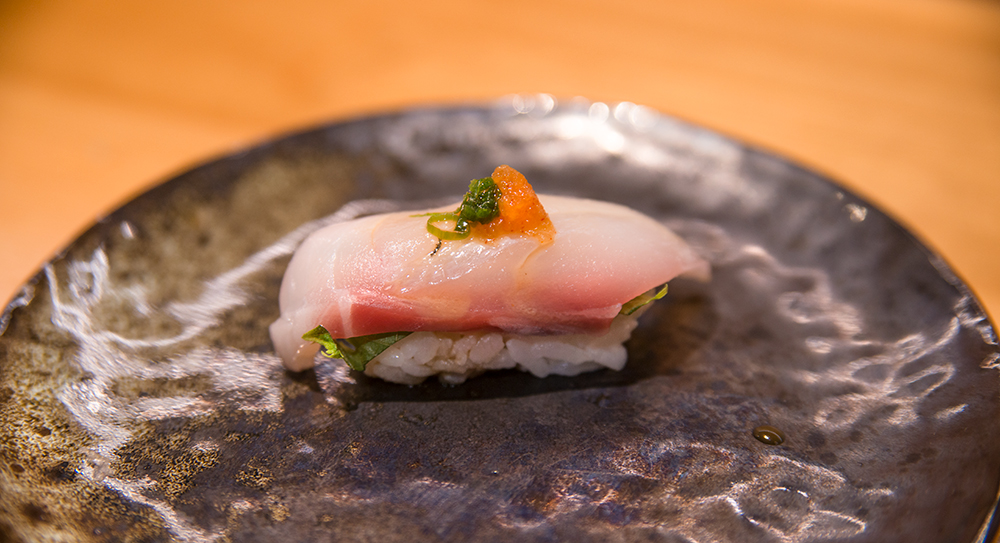
Suzuki – Sea Bass
Suzuki (鱸, すずき) is sea bass. They’re very popular as nigiri and sashimi. and are popular sushi and sashimi. They’re considered a type of shiromi and have a very mild taste.
Larger, older suzuki have more fat, color, and a softer texture.
Confusingly, there are two fish that are called suzuki: Japanese sea bass and striped bass. In the US, most suzuki is striped bass. They both taste similar. And striped bass is much more sustainable.
Check out my striped bass sushi and sashimi guide to learn more about this clean-tasting fish.
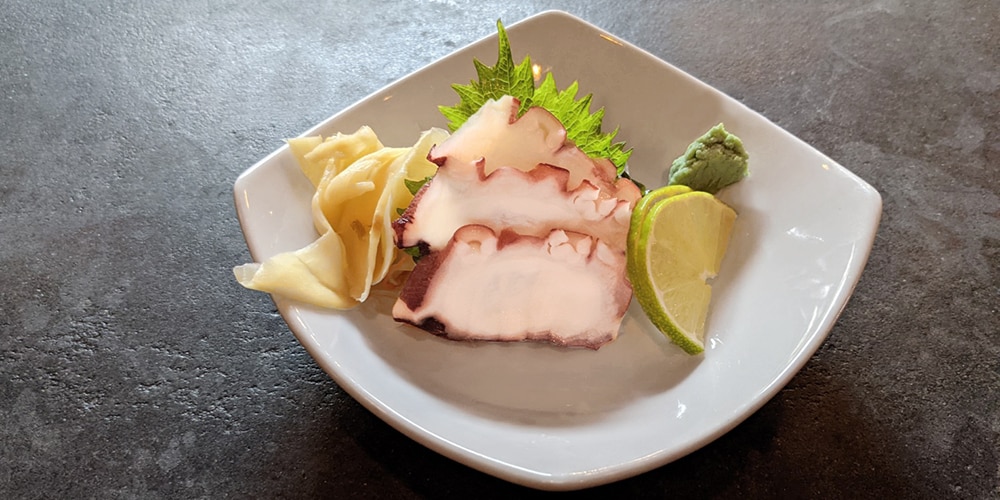
Tako – Octopus
Tako (たこ, 蛸) is a popular item at sushi bars and izakayas. Though they can be served raw, octopus is often boiled or cooked some other way to make the meat softer.
Tako has a clean and slightly sweet flavor. Their texture tends to be on the chewy side, though there are exceptions.
Check out my full-length tako guide!
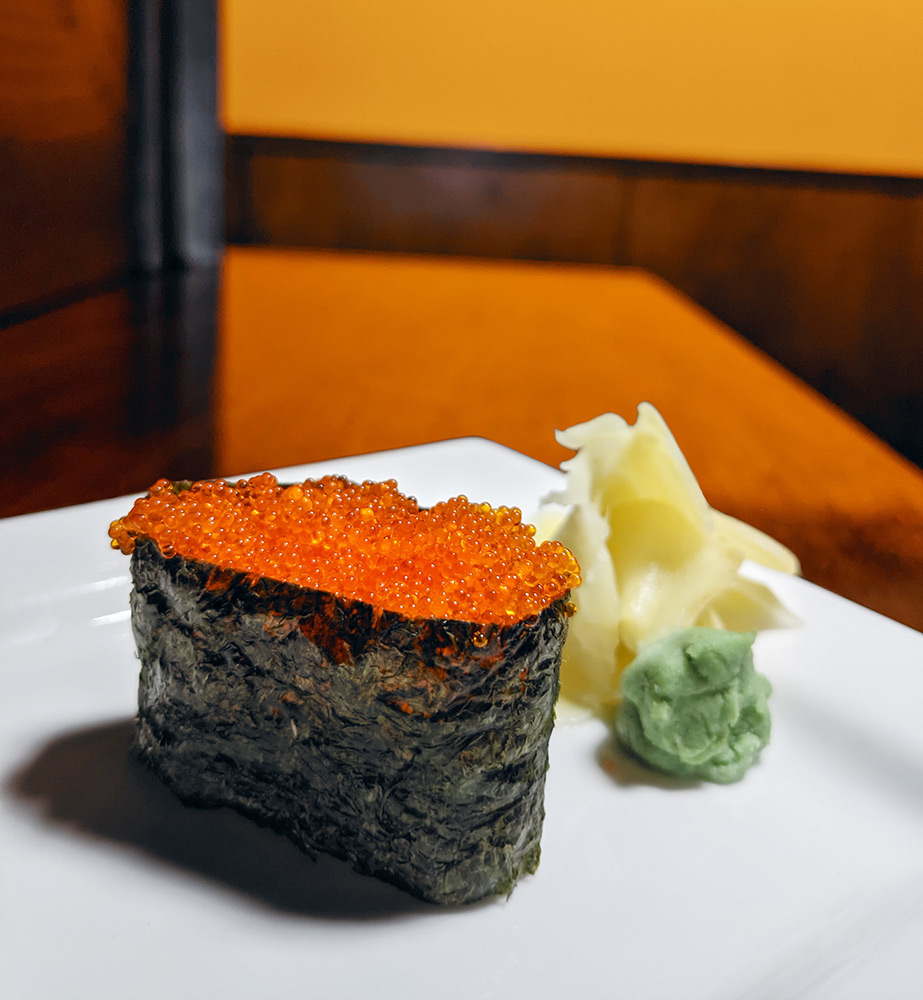
Tobiko – Flying Fish Roe
Tobiko (とびこ) are the eggs of flying fish. They are commonly found in sushi restaurants. They look similar to masago, but with a deeper orange color.
Tobiko is also slightly larger and crunchier than masago. Both types of roe are typically highly processed. This includes dye and flavoring.
There are many types of tobiko. Usually, they’re bleached first, then flavoring is added. Black tobiko is marinated in squid ink. Wasabi tobiko is usually flavored with horseradish (sometimes wasabi) and dyed blue-green. Yellow-orange tobiko often derives its color from yuzu.
Learn more about tobiko (and masago) with our informative guide.
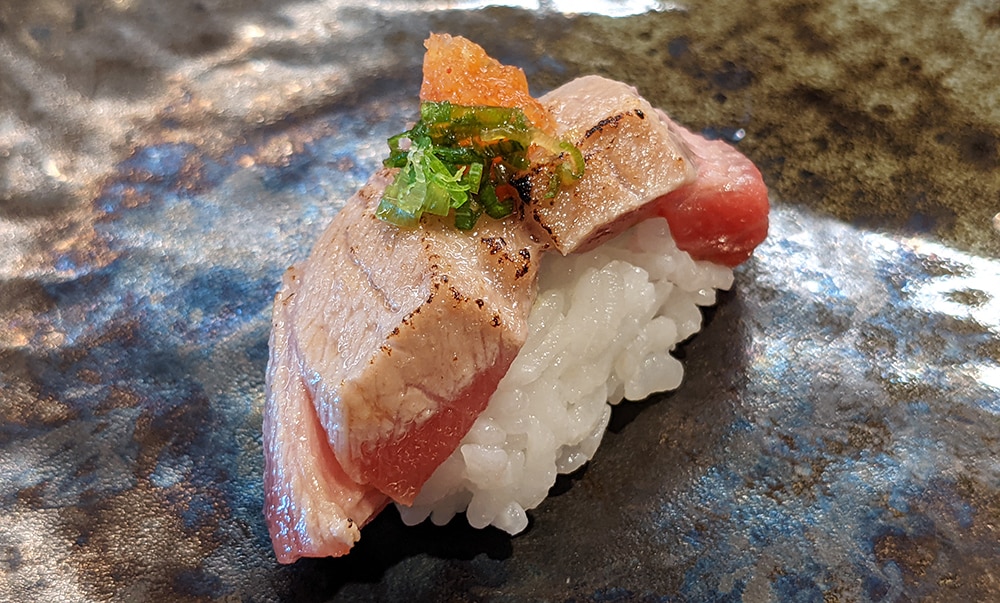
Toro – Fatty Tuna
Toro (トロ) is the fatty belly cut from bluefin tuna. It can also come from other fatty parts of other species. Toro is a broad term that includes more specific grades like otoro and chutoro.
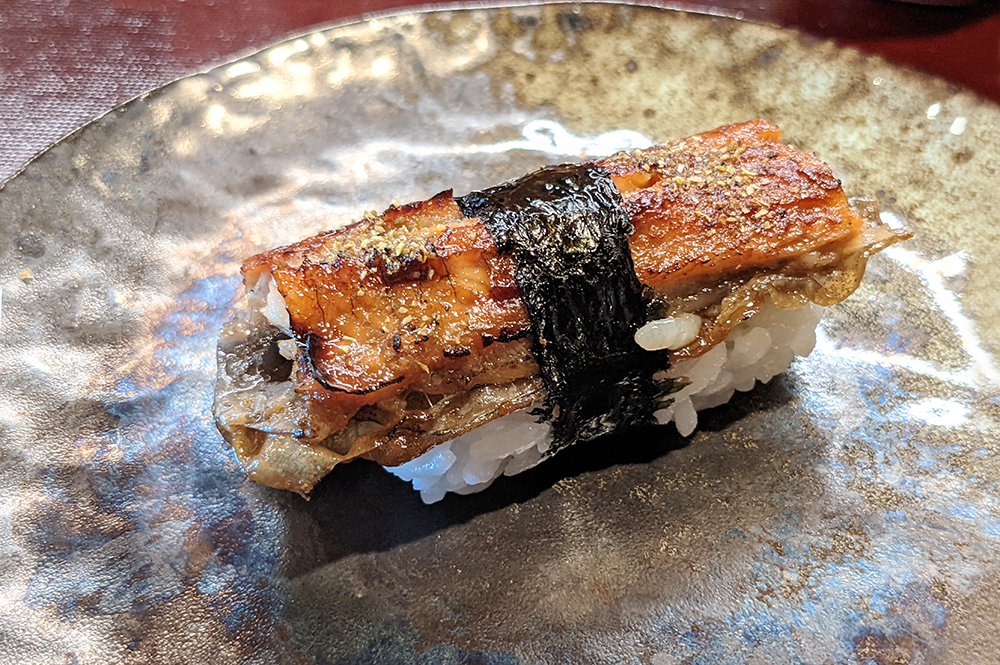
Unagi – Freshwater Eel
Unagi (うなぎ, 鰻) is freshwater eel. This oily, fatty fish is prized. Unagi is usually served broiled. It commonly finds itself served as various types of sushi and sometimes as sashimi.
Japanese eels were originally used, but their population is in significant decline. More recently, American eels have been substituted and they too are in serious decline.
The fishies for unagi are unsustainable, and poaching is common. After young eels are trapped, they’re live-shipped to southeast Asia where they are raised in freshwater ponds. They often arrive at sushi restaurants heavily processed and pre-cooked.
Black cod (gindara) is a more sustainable and ethical alternative where it can be found.
Freshwater eel is a meaty subject. Check out our unagi guide if you want to learn more about this fish, its popular presentations, and drink pairings,
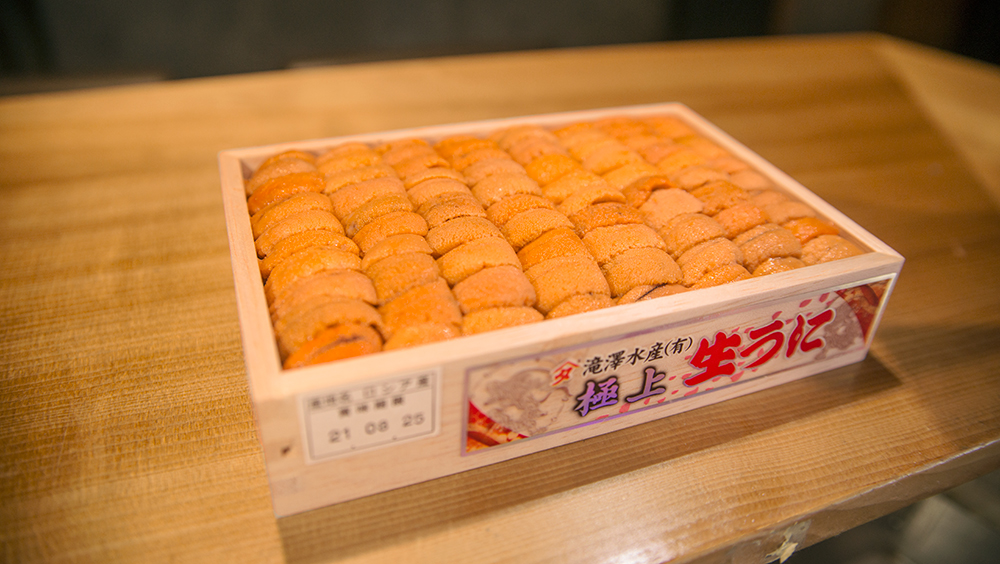
Uni – Sea Urchin
Uni (うに, 海胆) is a premium sushi bar item. It’s typically served as gunkanmaki, on chirashi, or sometimes as sashimi.
Uni is the gonads of the urchin and has a light yellow to deep orange color. Its texture is soft but varies from creamy to slightly firm. Uni generally tastes sweet and briny.
I haven’t gotten around to writing a full-length uni post yet. However, I do have a post covering the best sake with uni sushi. Take a look and elevate your uni experiences!
Uzura – Quail
Uzura (鶉, うずら) is quail, and their eggs are called uzura no tamago (鶉の卵). In sushi restaurants sometimes their eggs are simply called uzura.
You’ll most often find these served raw over gunkan sushi like uni or ikura.
Vegetarian Sushi
There are numerous vegetarian sushi options. Some of them are traditional, and there are many more modern forms. Vegan sushi is more limiting, but there are still a number of delicious choices.
Maki offers the widest range of options for vegetarian sushi.
Classics include the kappa, natto, oshinko, ume shiso, yamagobo, shiitake, and kanpyo rolls. Avocado is another popular choice, as are cucumber and avocado.
Tamagoyaki, or tamago, sushi is made with egg omelet. This sometimes includes dashi. Tamago is a popular ingredient for nigiri sushi and inside of rolls. The nigiri form is typically served at the end of a traditional sushi experience.
Vegetables for Sushi
There are several types of vegetables, fruit, and eggs that can be found in a sushi restaurant. Below are some of the most common.
Kanpyo – Dried Gourd
Kanpyo (かんぴょう) are shaved and dried gourd. In a sushi restaurant, they’re then soaked in water, boiled until tender, and finally marinated in shoyu and sugar.
Kanpyo is used to make the classic sushi roll: the kanpyo maki. It’s also often found inside of futomaki.
Kyuri – Cucumber
Kyuri (きゅうり) are cucumbers. They can be found in countless sushi variations.
Nasu – Eggplant
Nasu is Japanese eggplant. The Japanese versions are much smaller than the Western varieties. Eggplant is often pickled and sometimes seared. Nasu makes delicious nigiri and maki sushi.
Satusuma Imo – Japanese Sweet Potato
Satsuma imo (さつまいも) gets its name from the old Satsuma region of Japan (Kagoshima) where it was, and still is, widely cultivated.
In sushi form, you’ll most often find Satsuma imo tempura-battered and fried. It’s then placed inside sushi rolls. Of course, it’s a common item on tempura platters, as well.
Shiitake
Shiitake is a type of mushroom. It’s cooked and often marinated before serving in makizushi.
Occasionally, shiitake can be found served as nigiri, as well.
Shiso
Shiso is the Japanese name for perilla leaf. There are green and red forms. Green shiso finds its way inside of sushi. It’s also often used as a presentation piece on sashimi and nigiri platters.
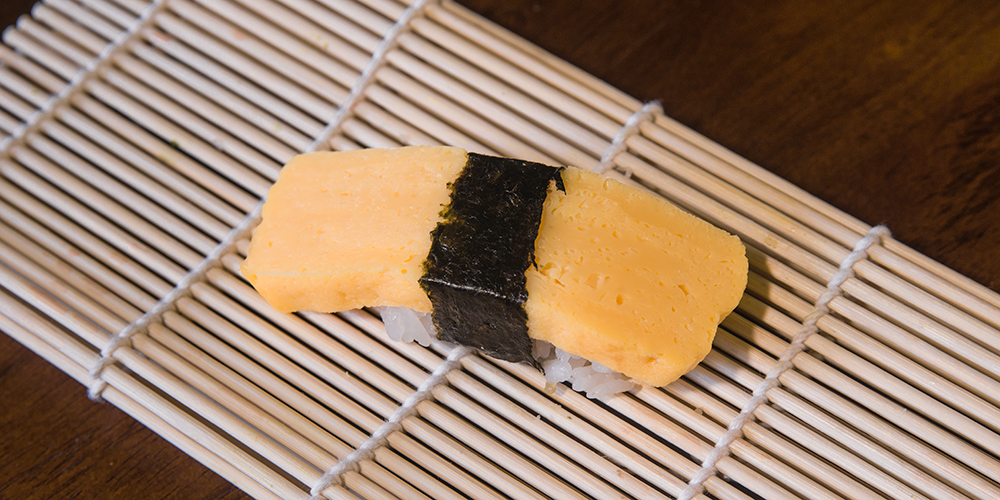
Tamago – Egg Omelet
Tamago is a general term for eggs. In a sushi restaurant, tamago is typically cut into blocks and served as nigiri sushi.
These egg omelets are often made with dashi.
If you’re a big fan of tamago like me, be sure to check out my Japanese tamago guide. You’ll learn how it’s used for sushi, how to make it, nutritional info, and more.
Umeboshi – Pickled Japanese Plum
Umeboshi is pickled plum. It has a purple color derived from red shiso and an extremely sour (and salty) taste. It’s often found in a paste.
Umeboshi paste is often used in hosomaki. And ume and shiso are a classic combination.
Yamagobo – Pickeled Burdock
Yamagobo (山ごぼう) is pickled burdock root. It’s often dyed bright orange and looks like a carrot. This is a popular addition to sushi rolls.
Garnishes, Sides, Sauces
Below is a list of common items that are associated with sushi and sashimi.
Wasabi
Wasabi (わさび) is a staple of the sushi experience. It’s commonly placed on nigiri, between the topping and sushi rice. Clumps of ground wasabi are also routinely placed on plates of sushi as an optional side.
Wasabi is a type of Brassica along with various types of mustard and horseradish. It has a spicy flavor that resembles horseradish. The spice affects the nasal area but is short-lived.
Wasabi is very hard to cultivate. Fresh examples are therefore extremely expensive and hard to get. And once it’s ground into a paste, it has a short shelf life.
Most wasabi served in Japanese restaurants is not wasabi at all. Instead, it’s an imitation made from horseradish and mustard seeds that are ground and dyed green. Real wasabi has a more subdued color and a milder level of heat.
Gari
Gari (ガリ) is pickled sushi ginger. It serves as a palate cleanser between bites of sushi. You’ll often find a pile of it next to the wasabi.
Gari is made from young, fresh ginger which has a softer texture and less spice. It’s sliced thin and pickled with rice vinegar and sugar.
Natural gari will have a tan and pink color. Processed versions are often dyed bright pink.
Shoyu – Soy Sauce
Shoyu (醤油) is soy sauce, the ubiquitous condiment that’s closely associated with the sushi experience. It’s made from fermented soybeans, koji mold, salt, and water.
Soy sauce is a brewed product and contains trace amounts of alcohol.
Nikiri
Nikiri is a sweet and reduced soy sauce mixture that is sometimes added to nigiri. There is no singular recipe, but it usually consists of shoyu, sake, and mirin.
If a sushi chef is kind enough to brush nikiri onto your sushi, you should not add soy sauce.
Momiji Oroshi
Momiji oroshi (もみじおろし) roughly translates to grated red maple leaf. It’s a mildly spicy condiment made from grated daikon radish and dried red chili pepper. You’ll sometimes find momiji added to shiromi (white-fleshed fish).
Tsume – Eel Sauce
Tsume is a sweet, dark sauce made from the reduced broth used to poach anago. Sake, shoyu, and sugar are typically in the reduction as well.
The good stuff is made from scratch and isn’t bottled.
Yuzu Kosho
Yuzu kosho (柚子胡椒) is a fermented paste made from yuzu peel, chili, and salt. It has many culinary uses. You’ll sometimes find it on top of nigiri and sashimi, particularly on fish like sawara and saba.